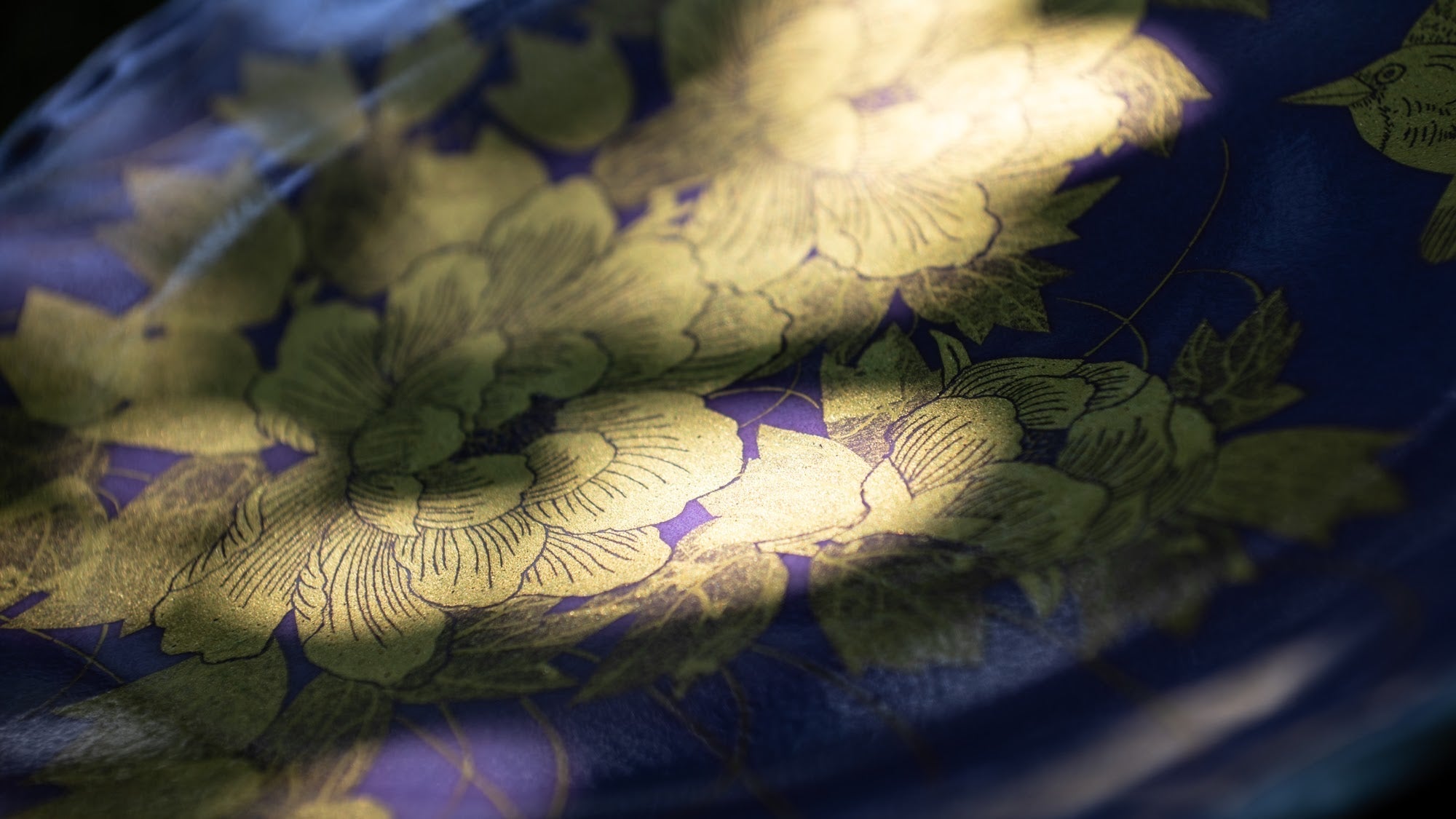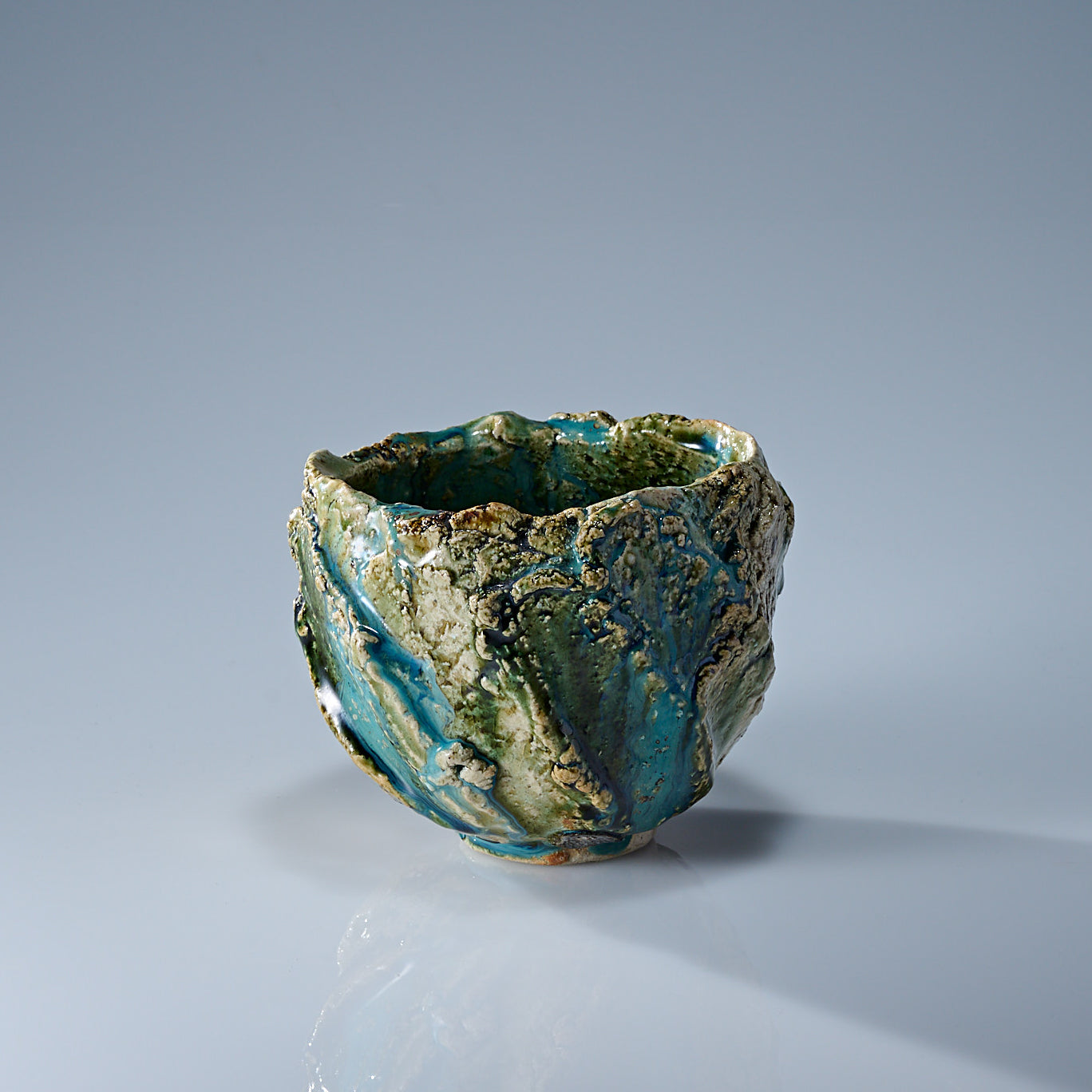
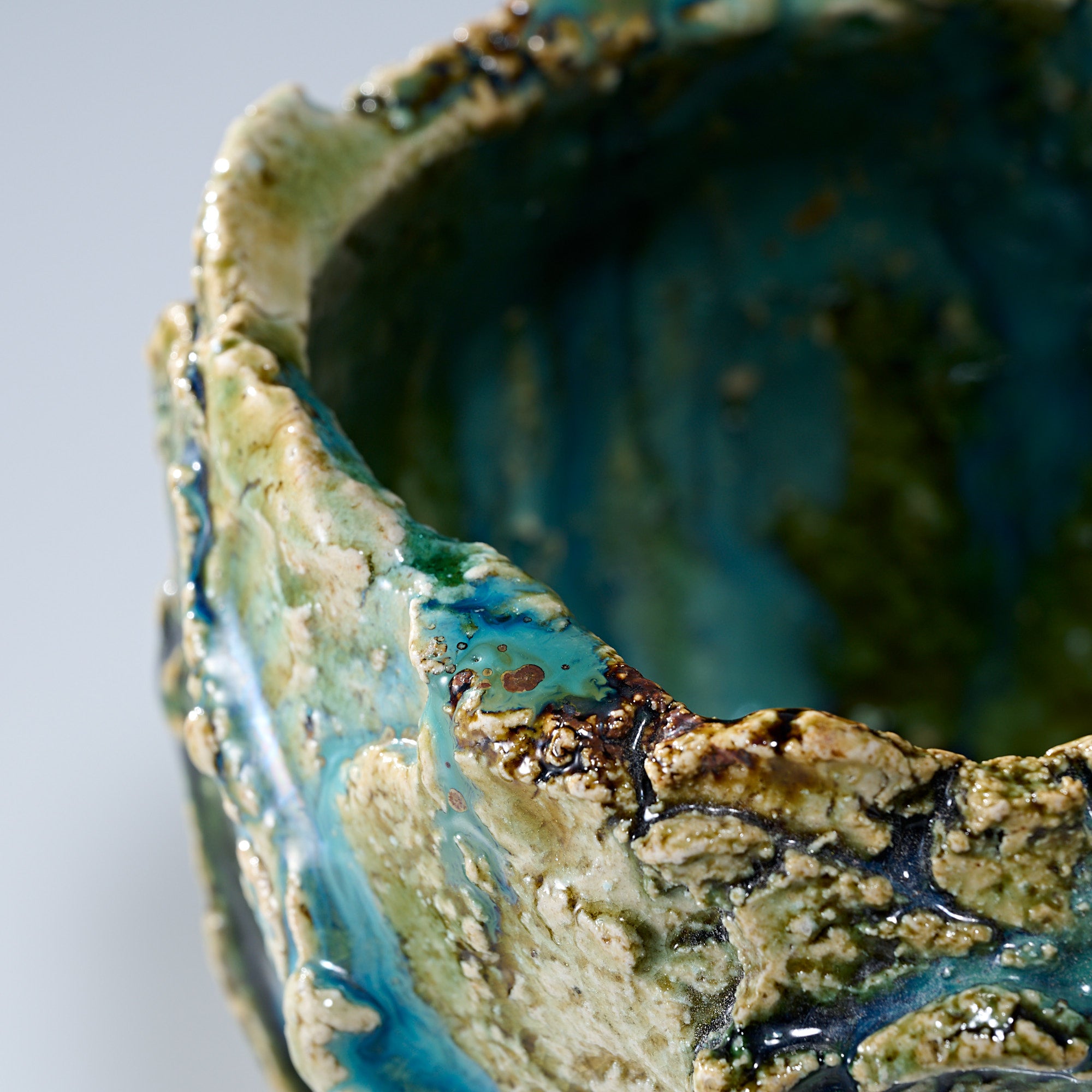
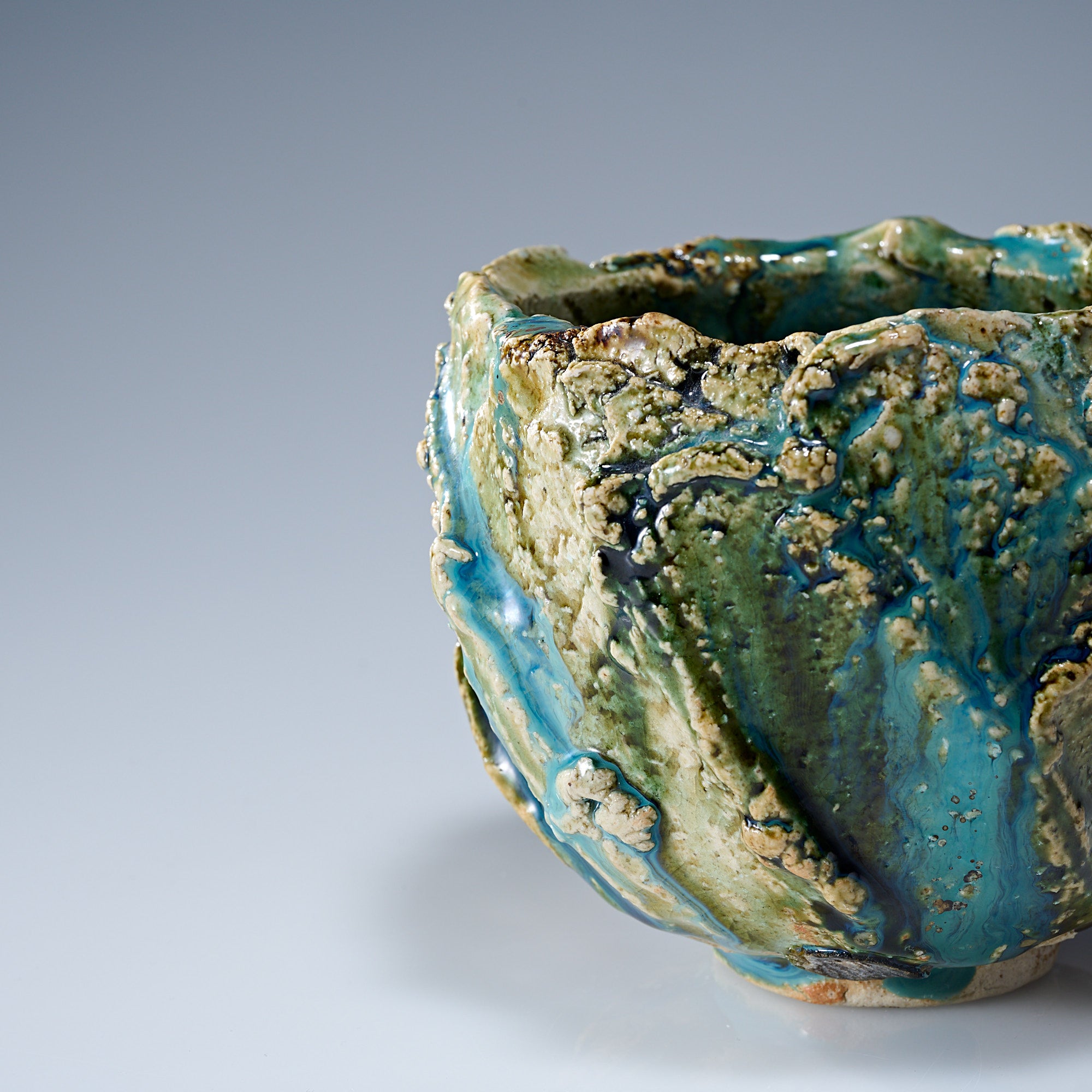
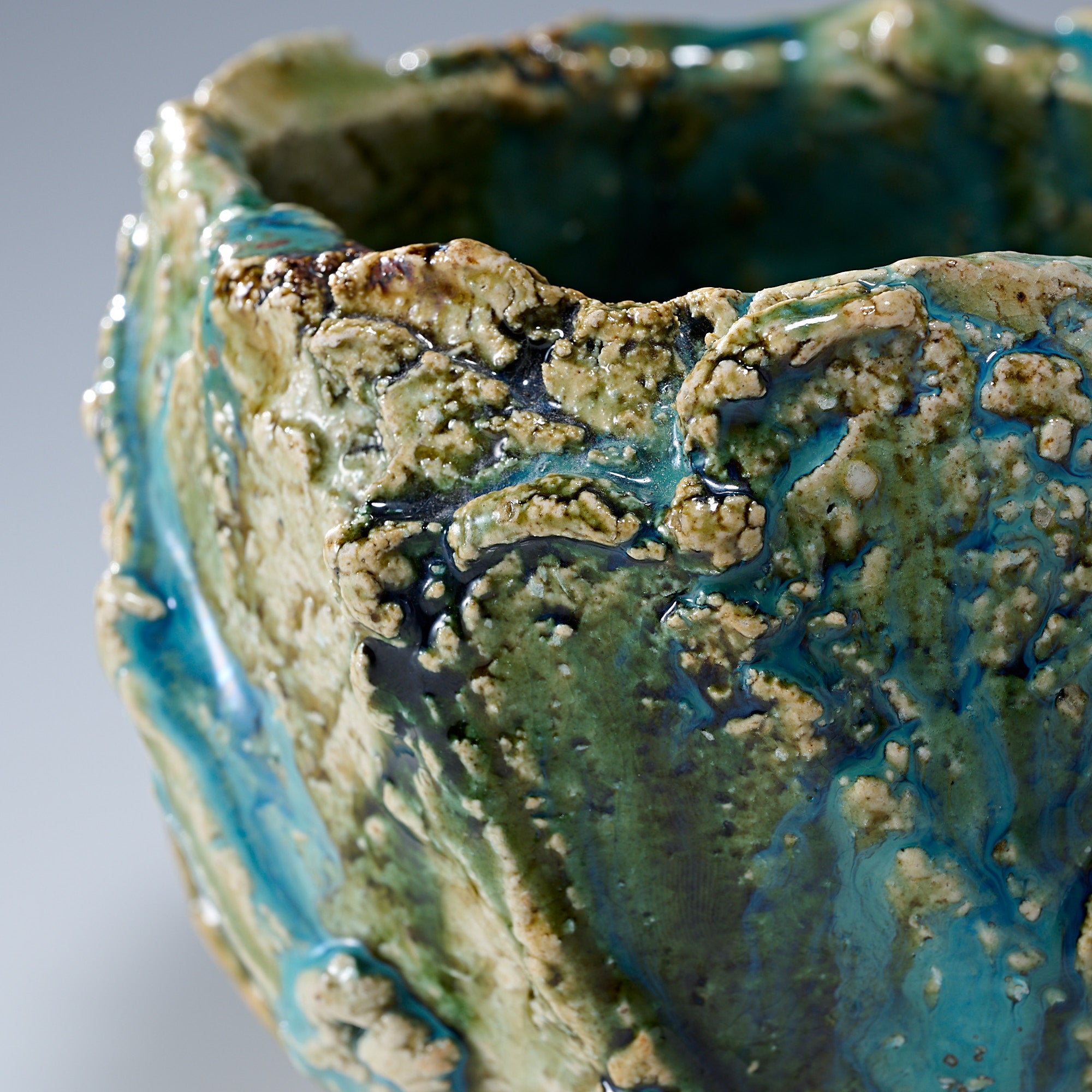
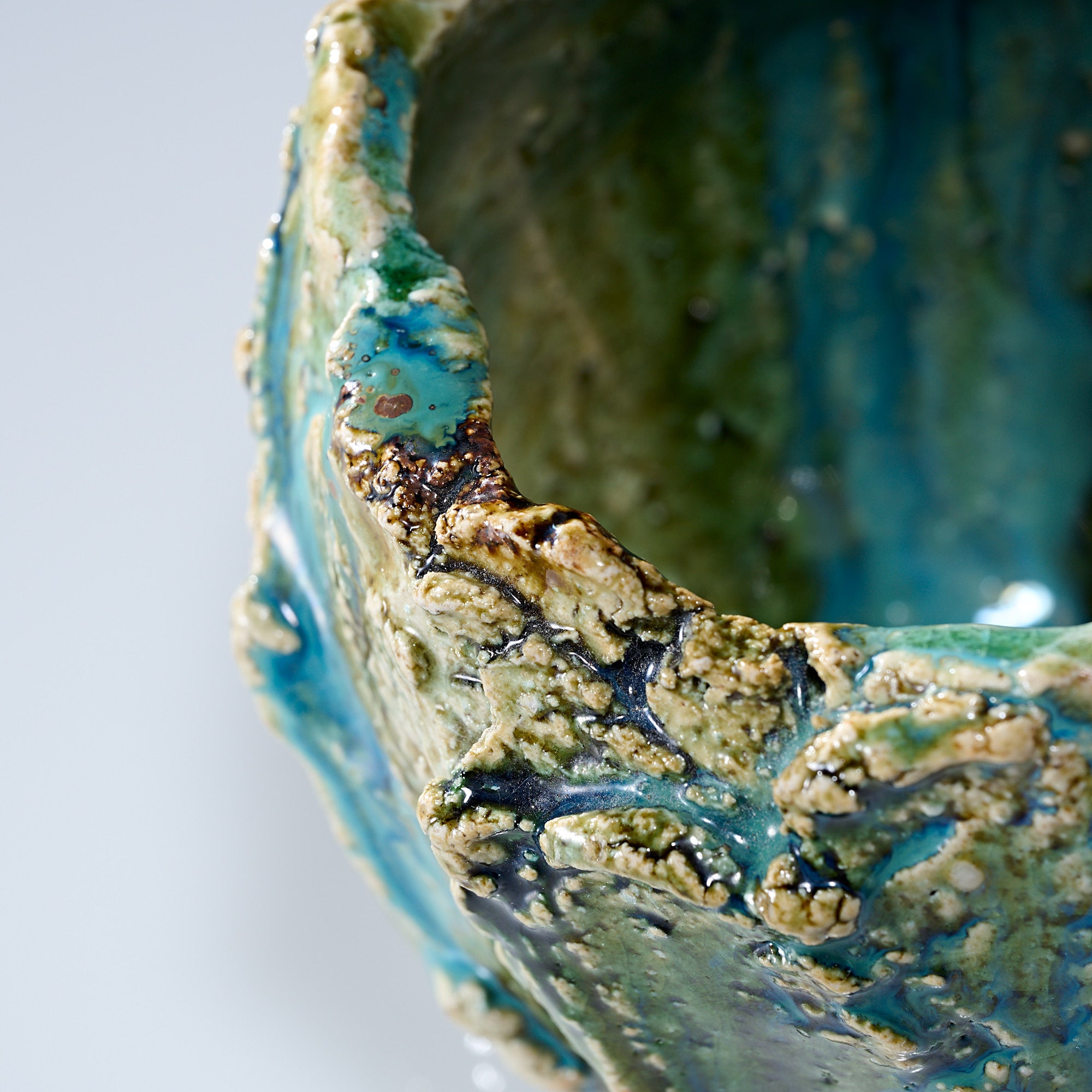
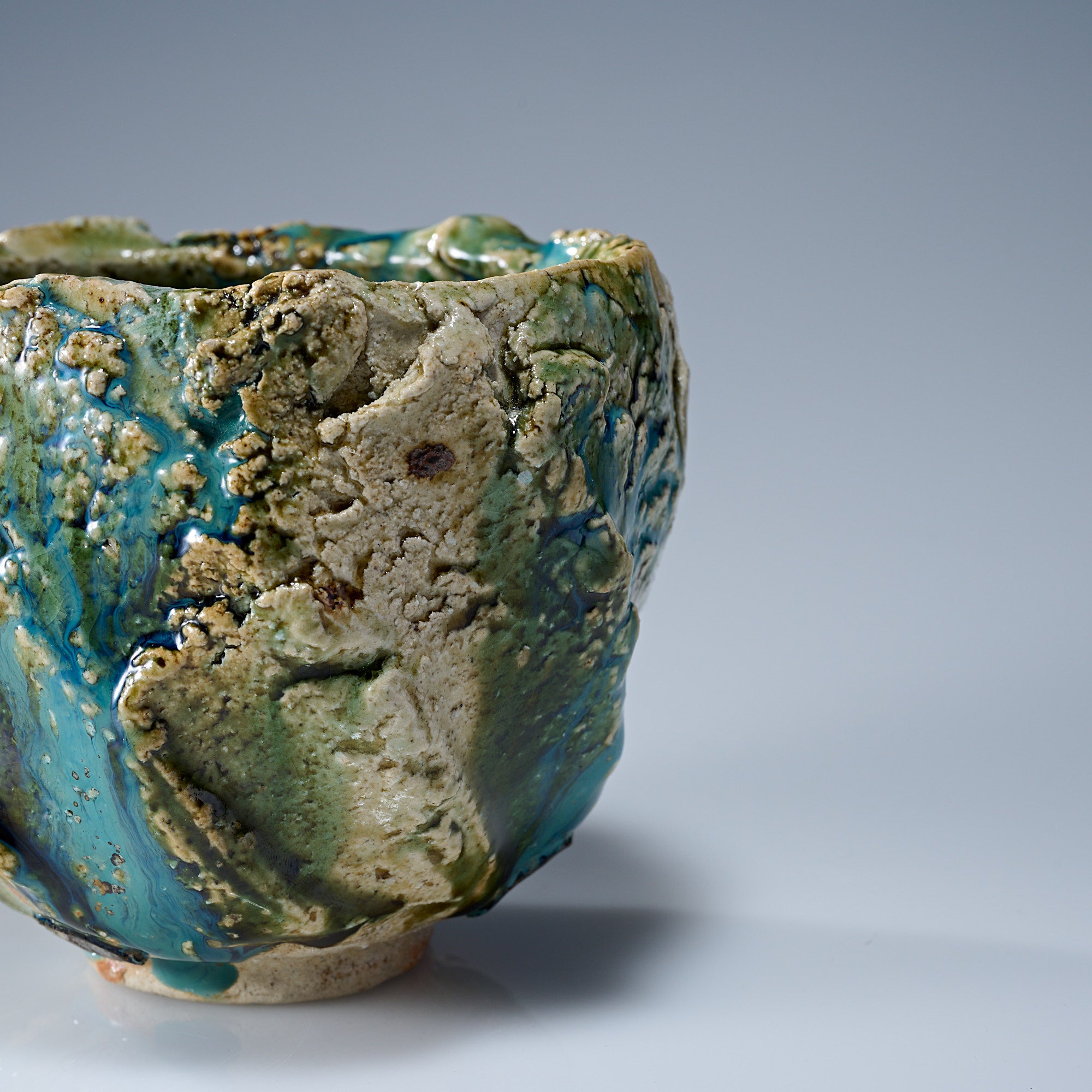
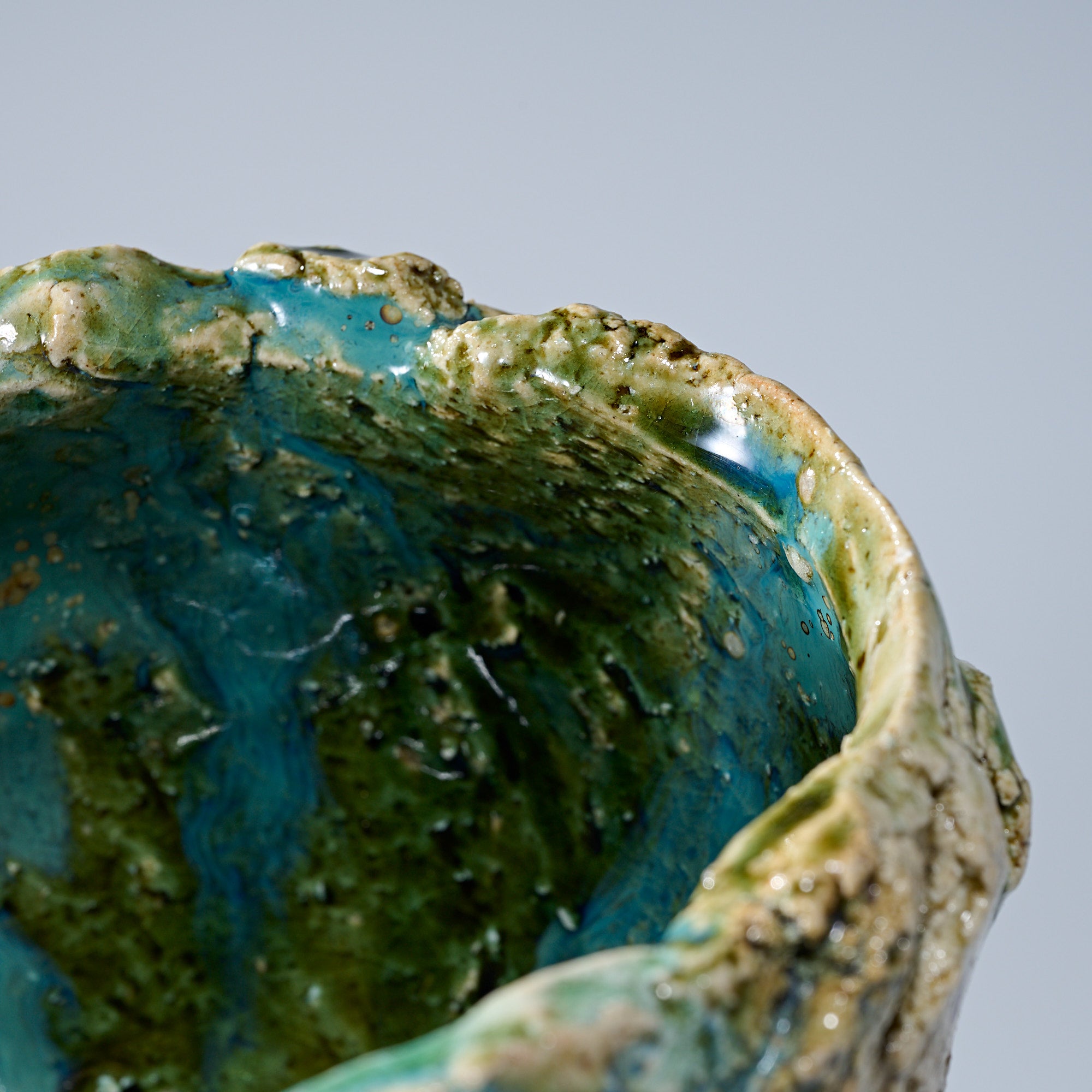
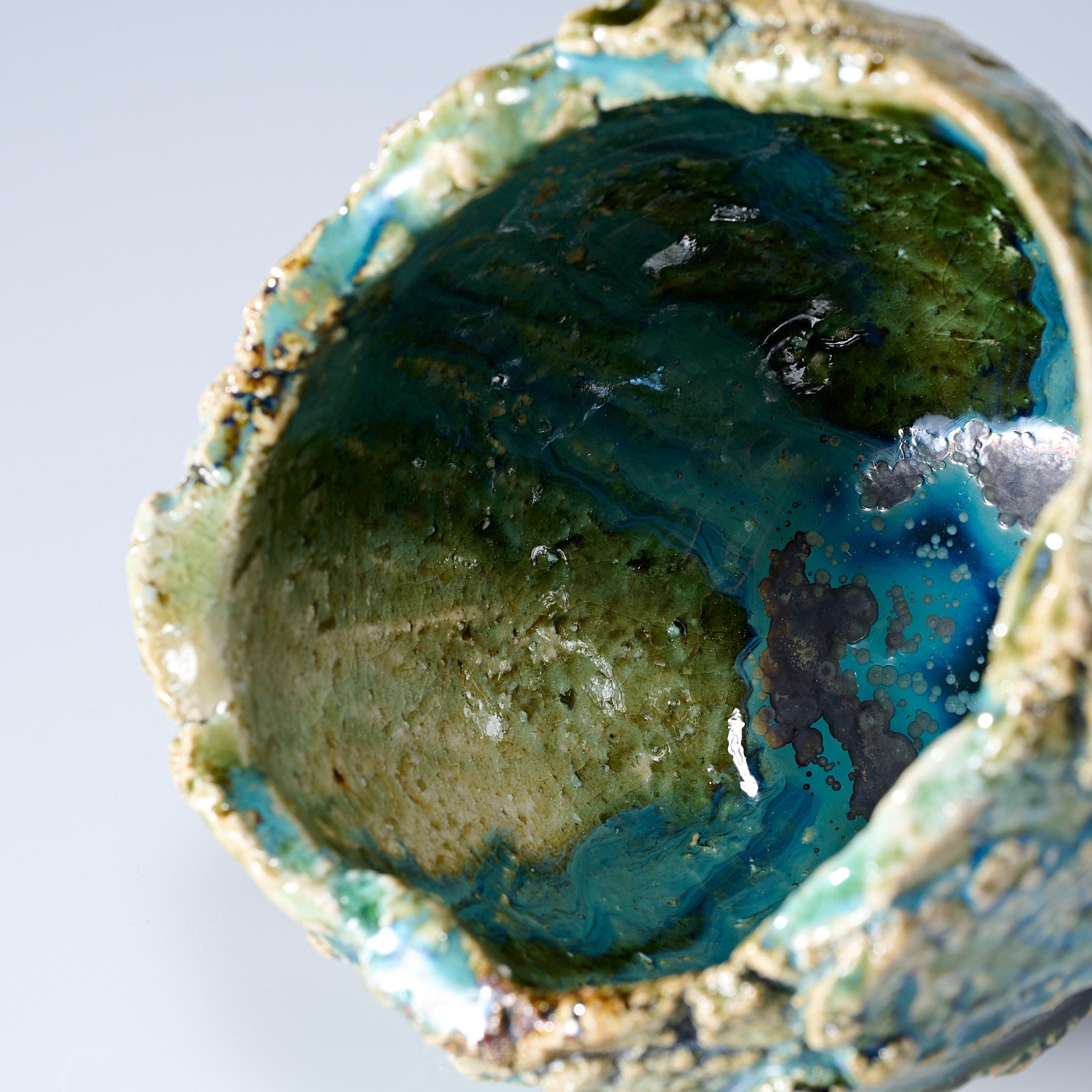
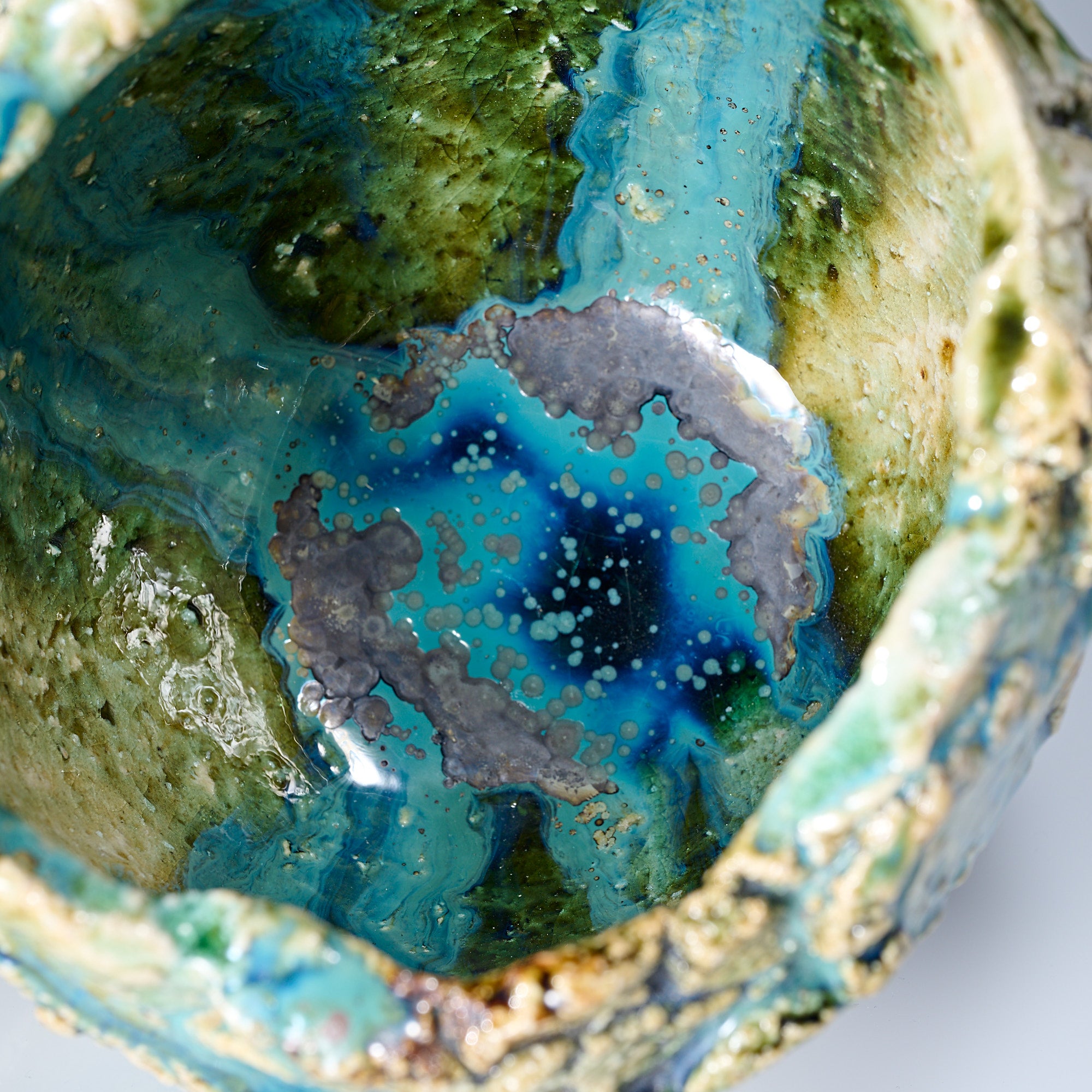
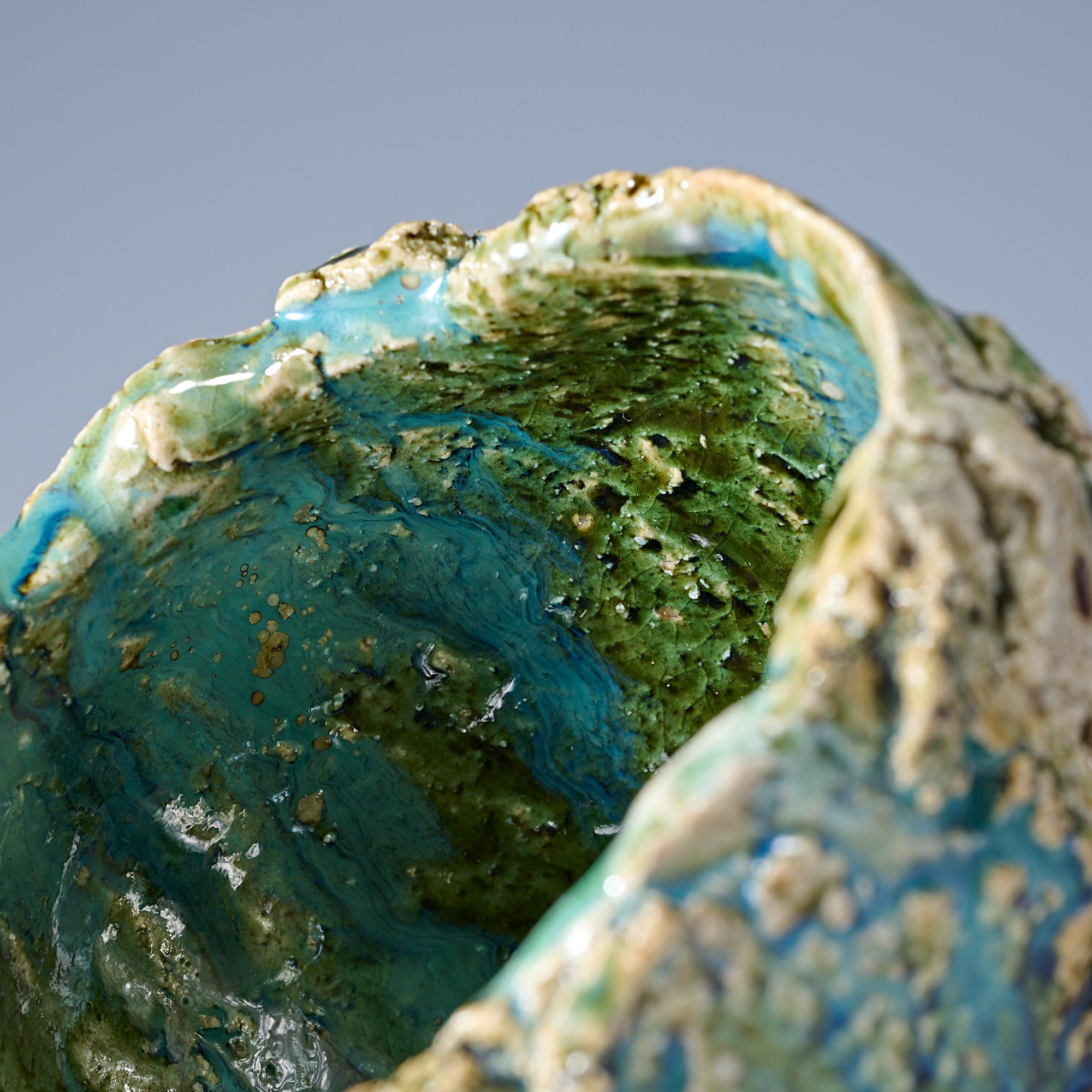
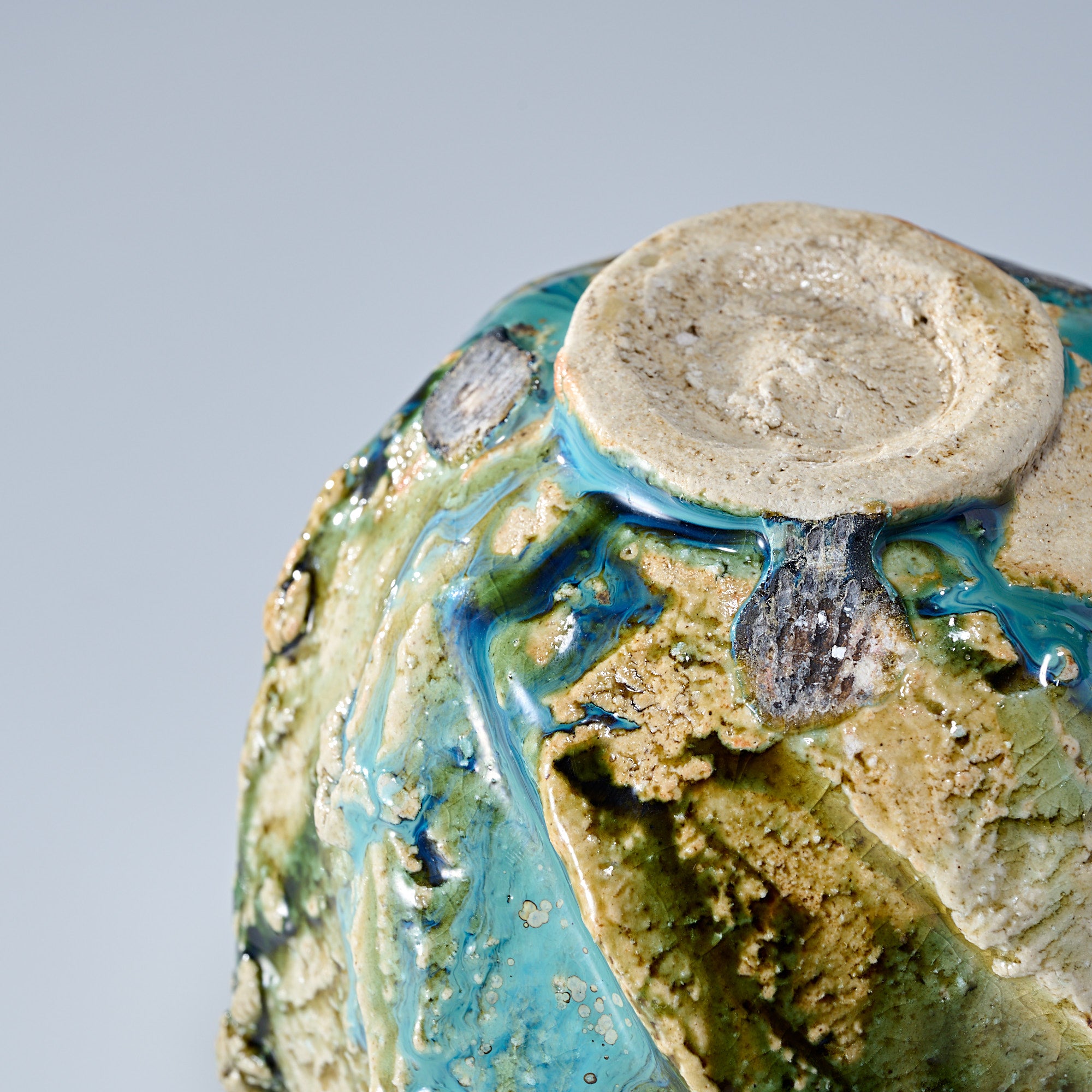
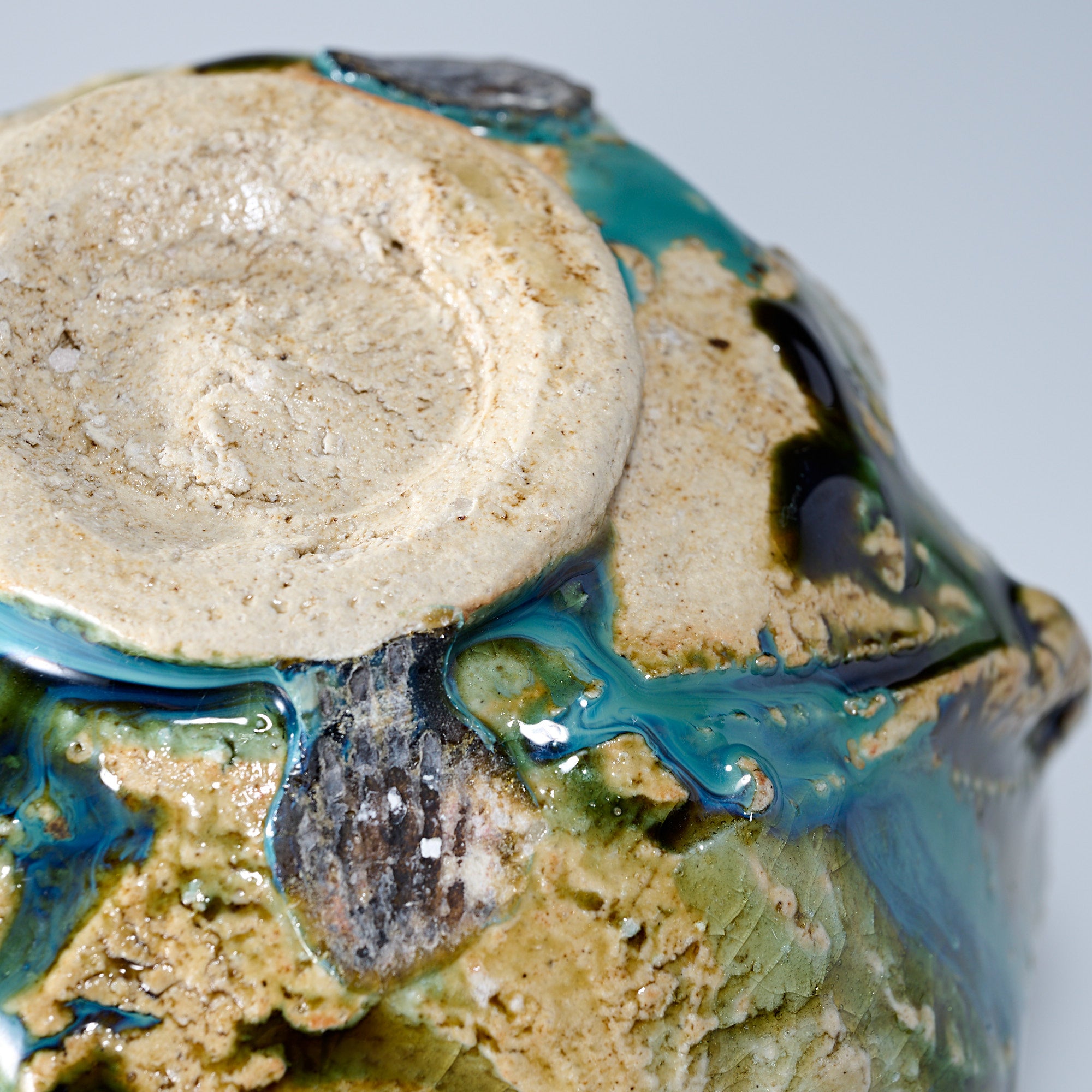
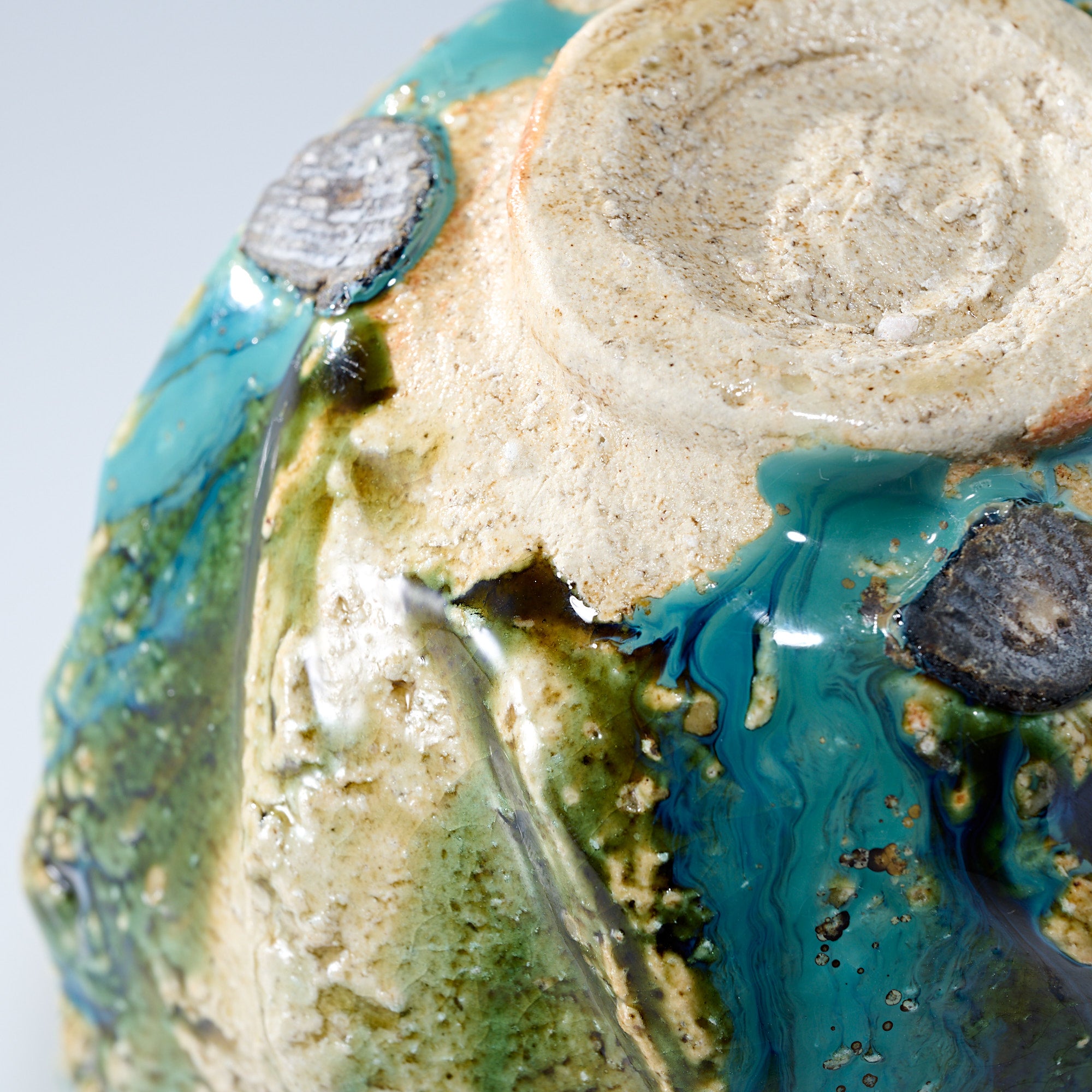
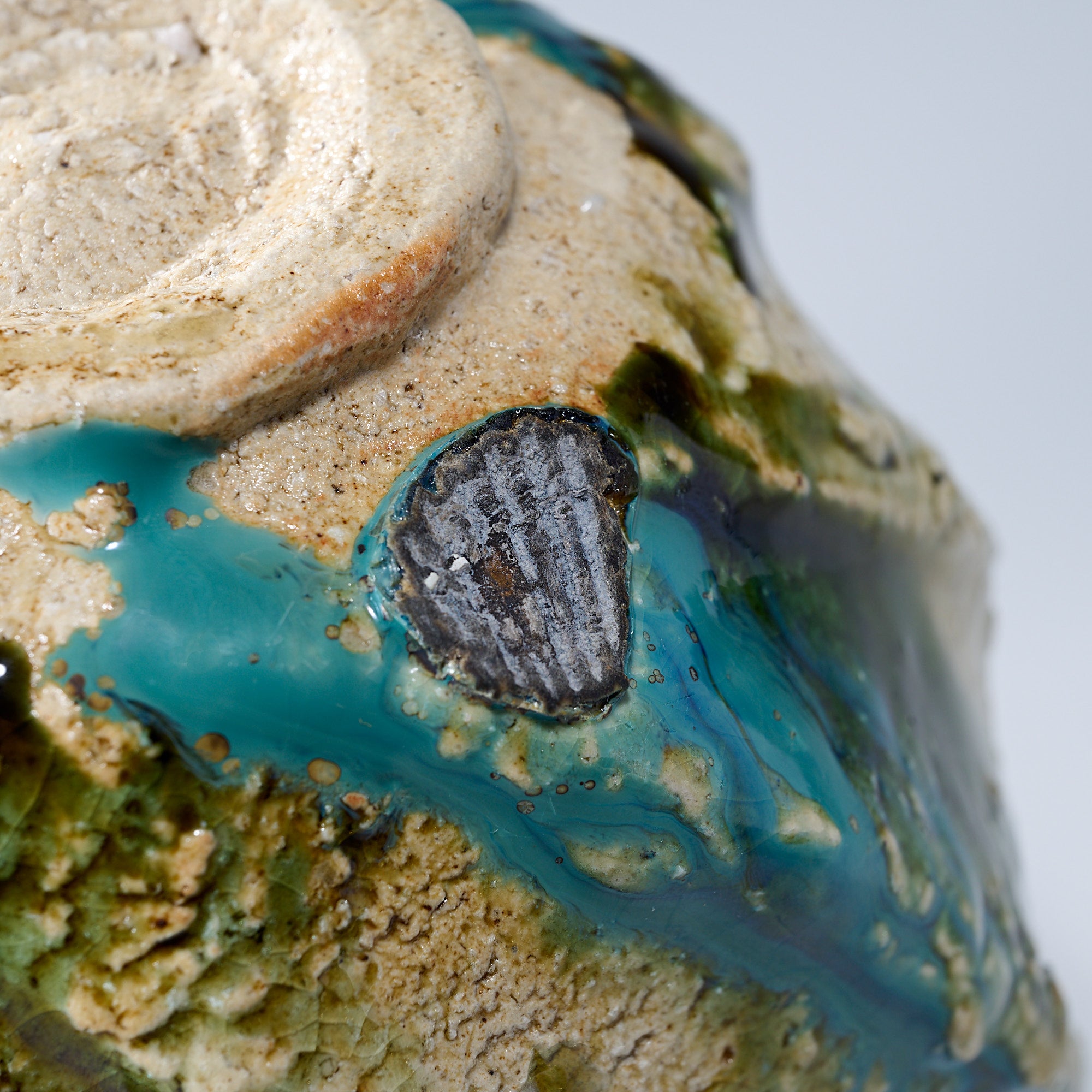
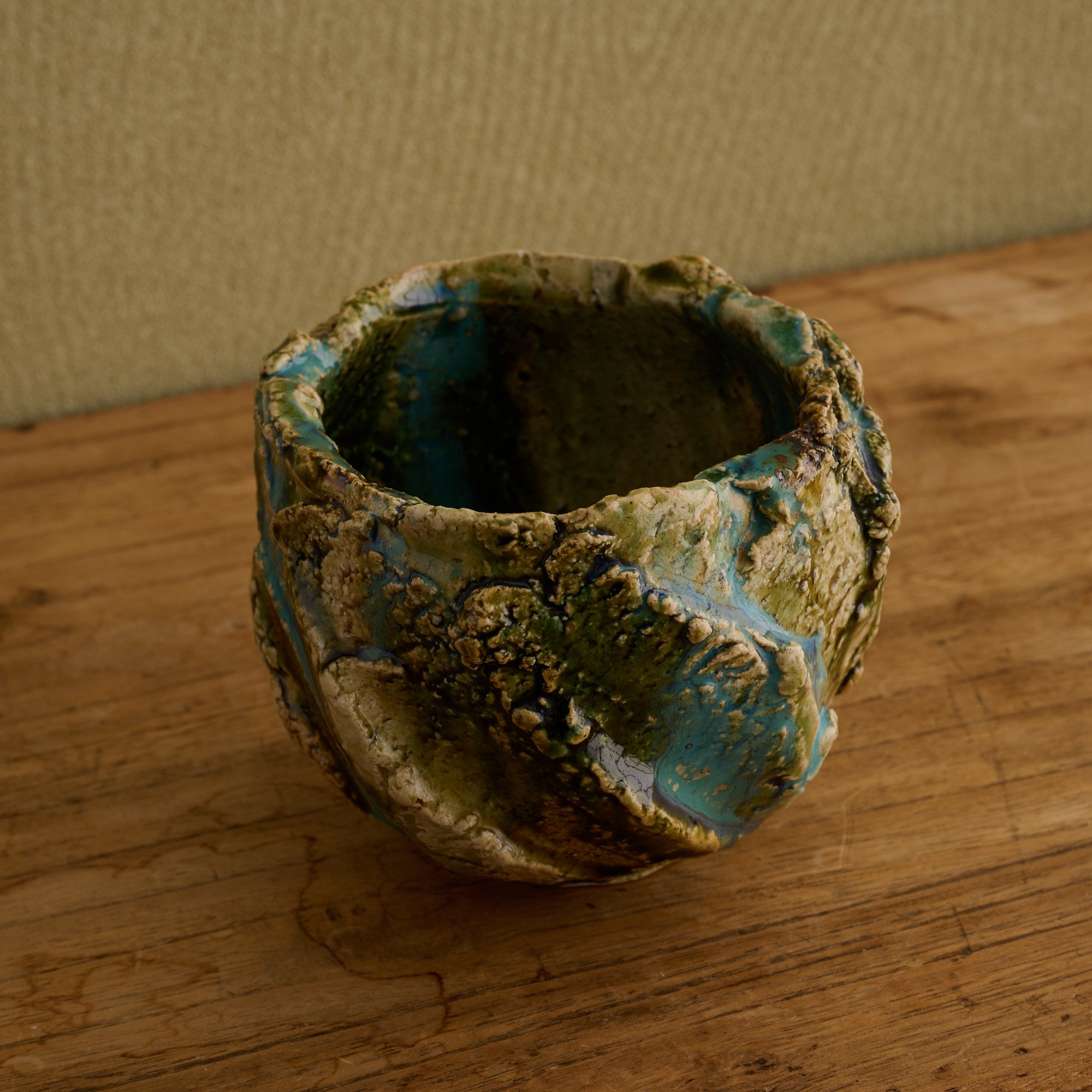
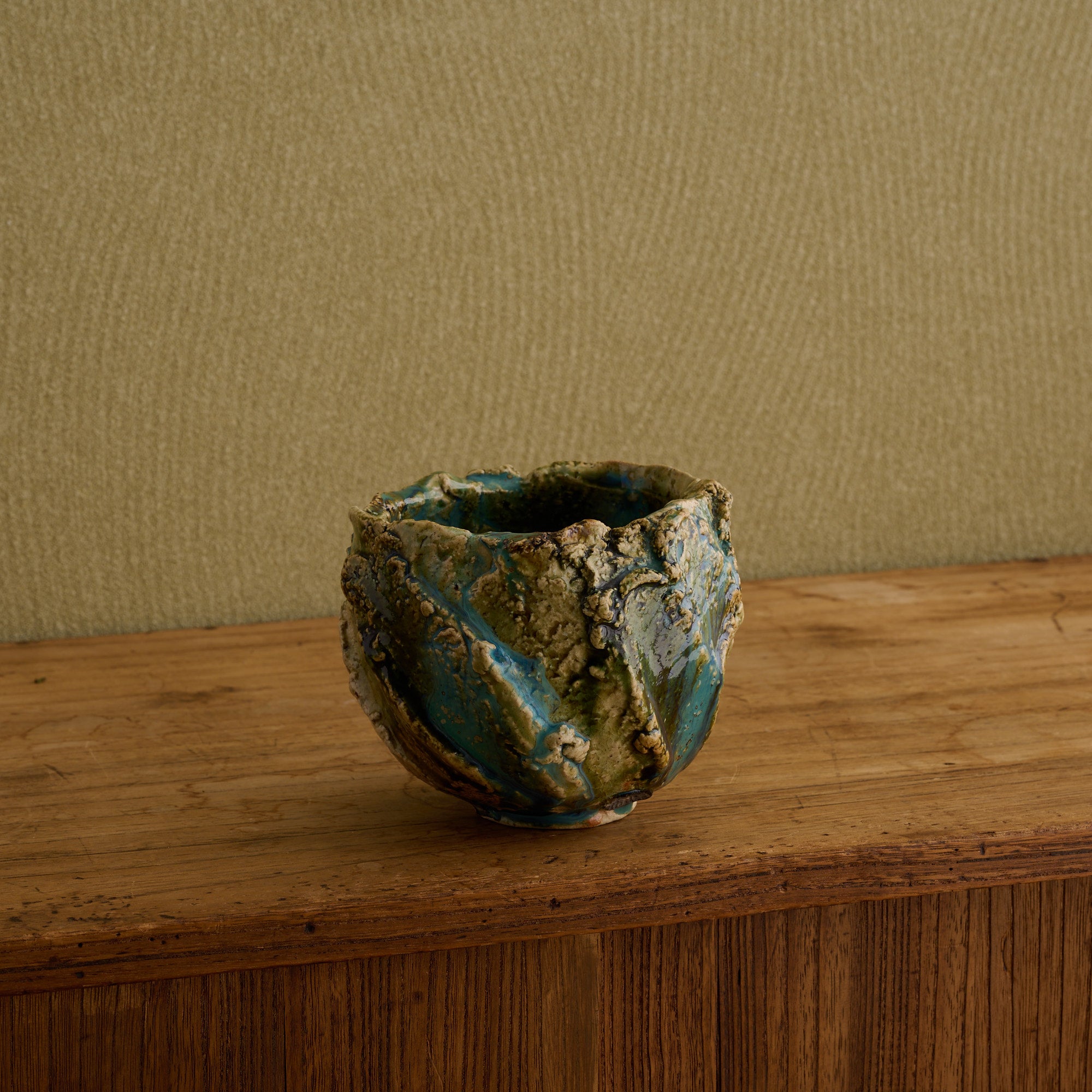
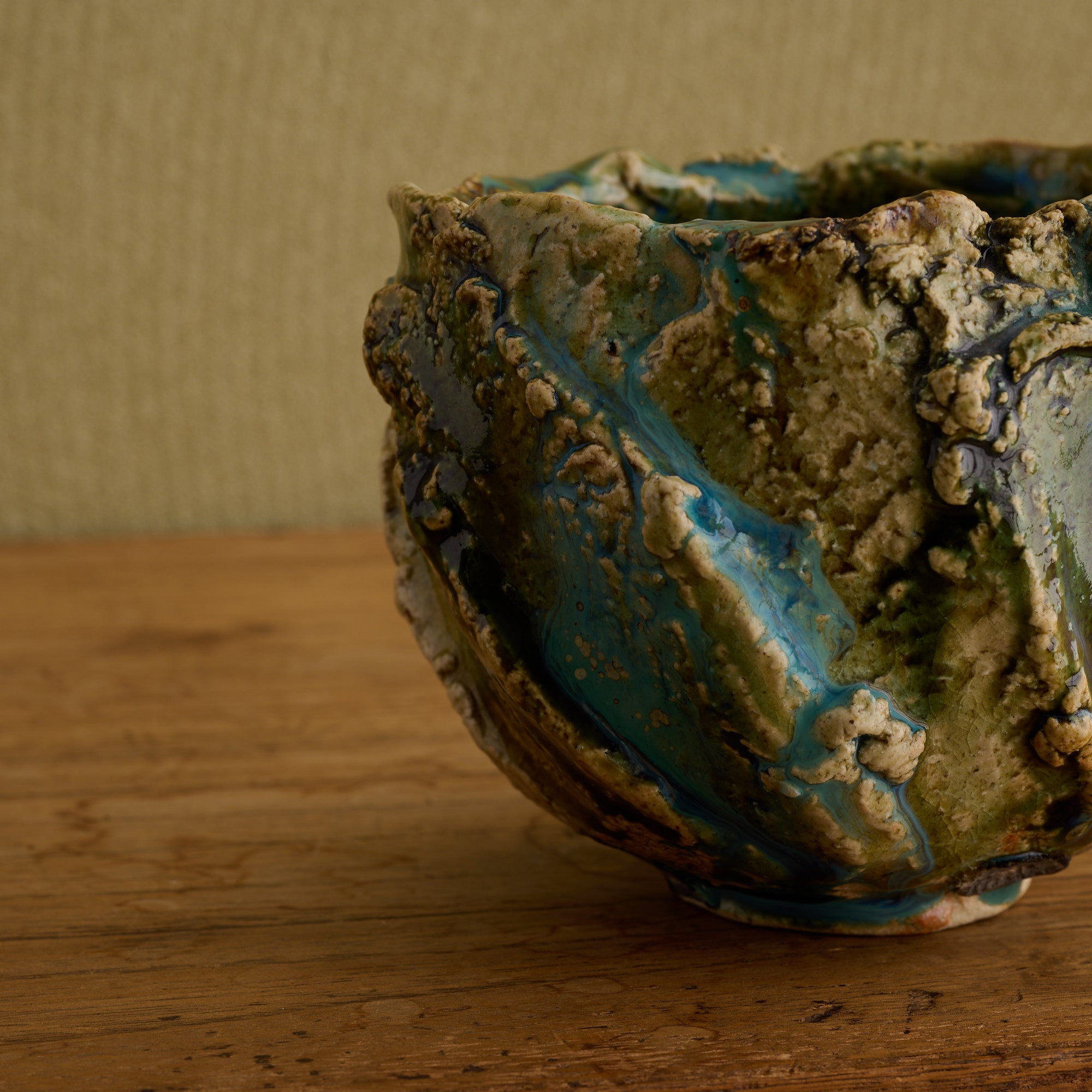
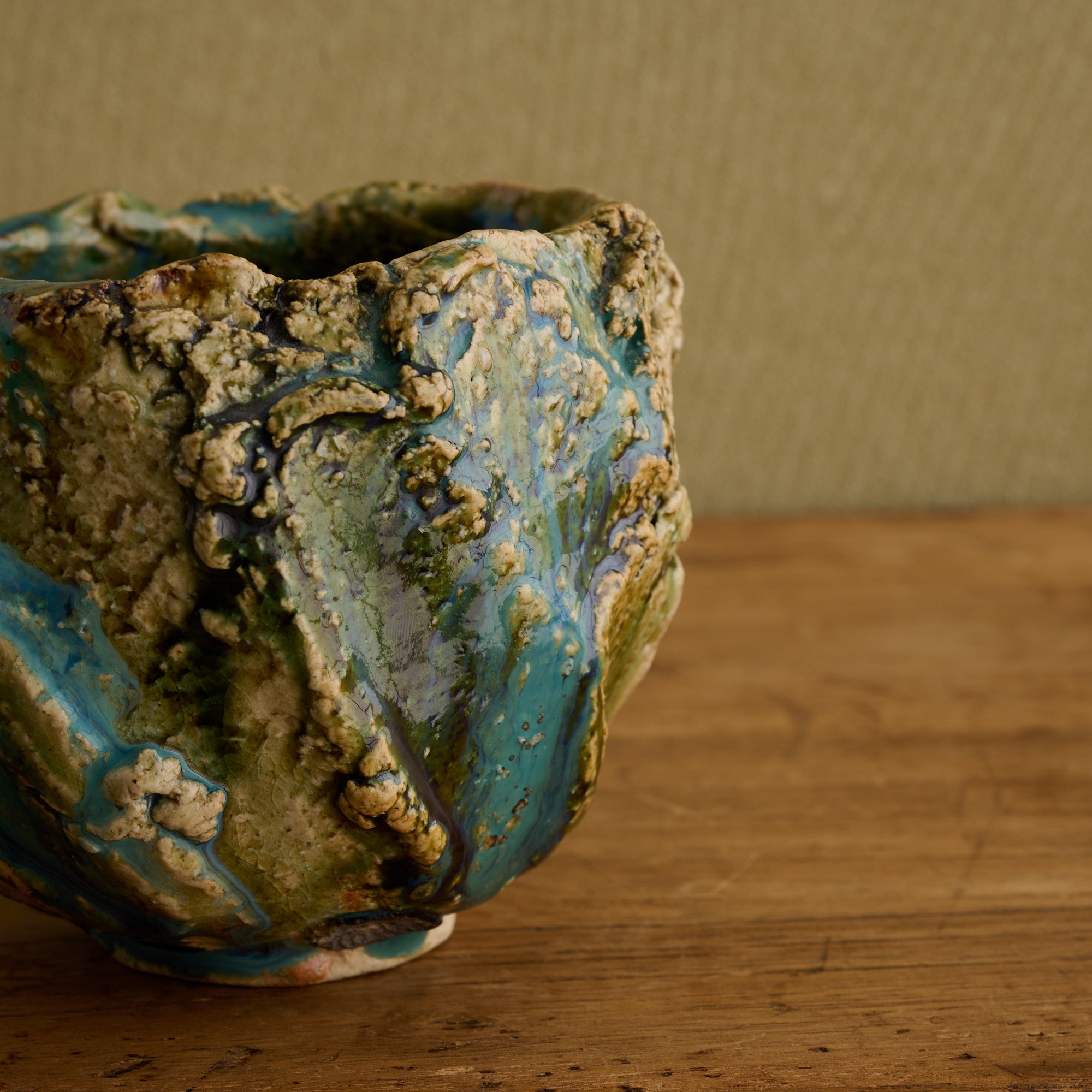
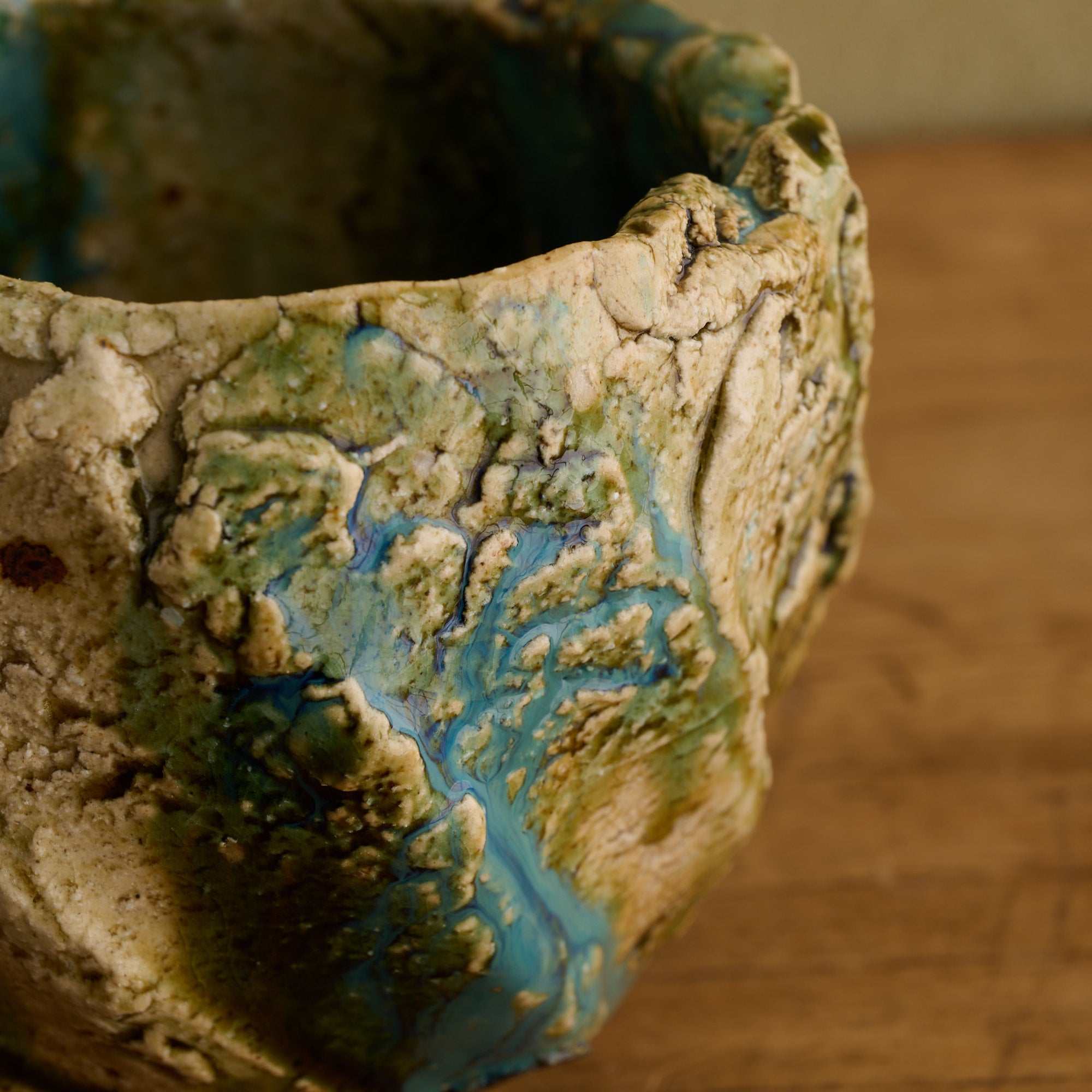
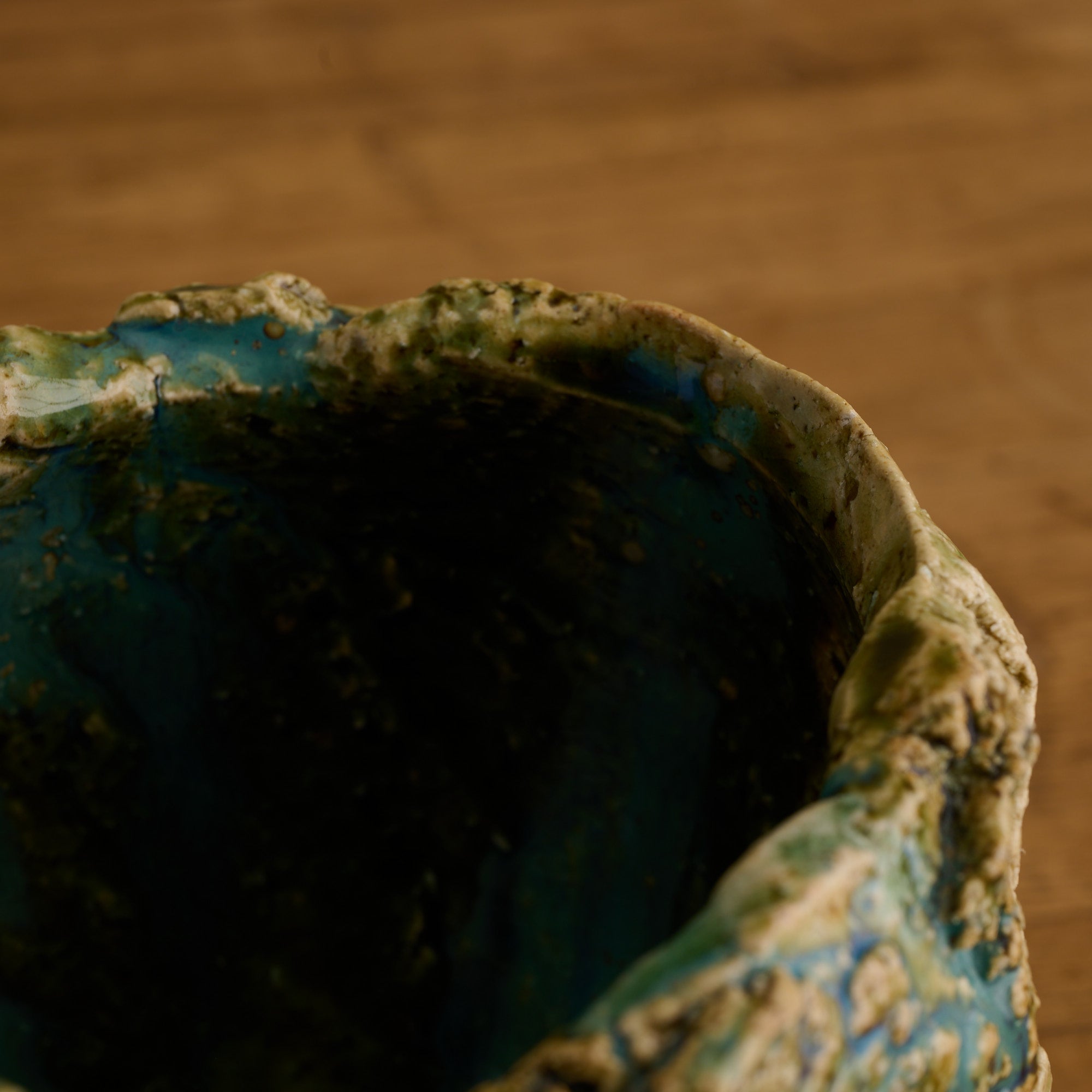
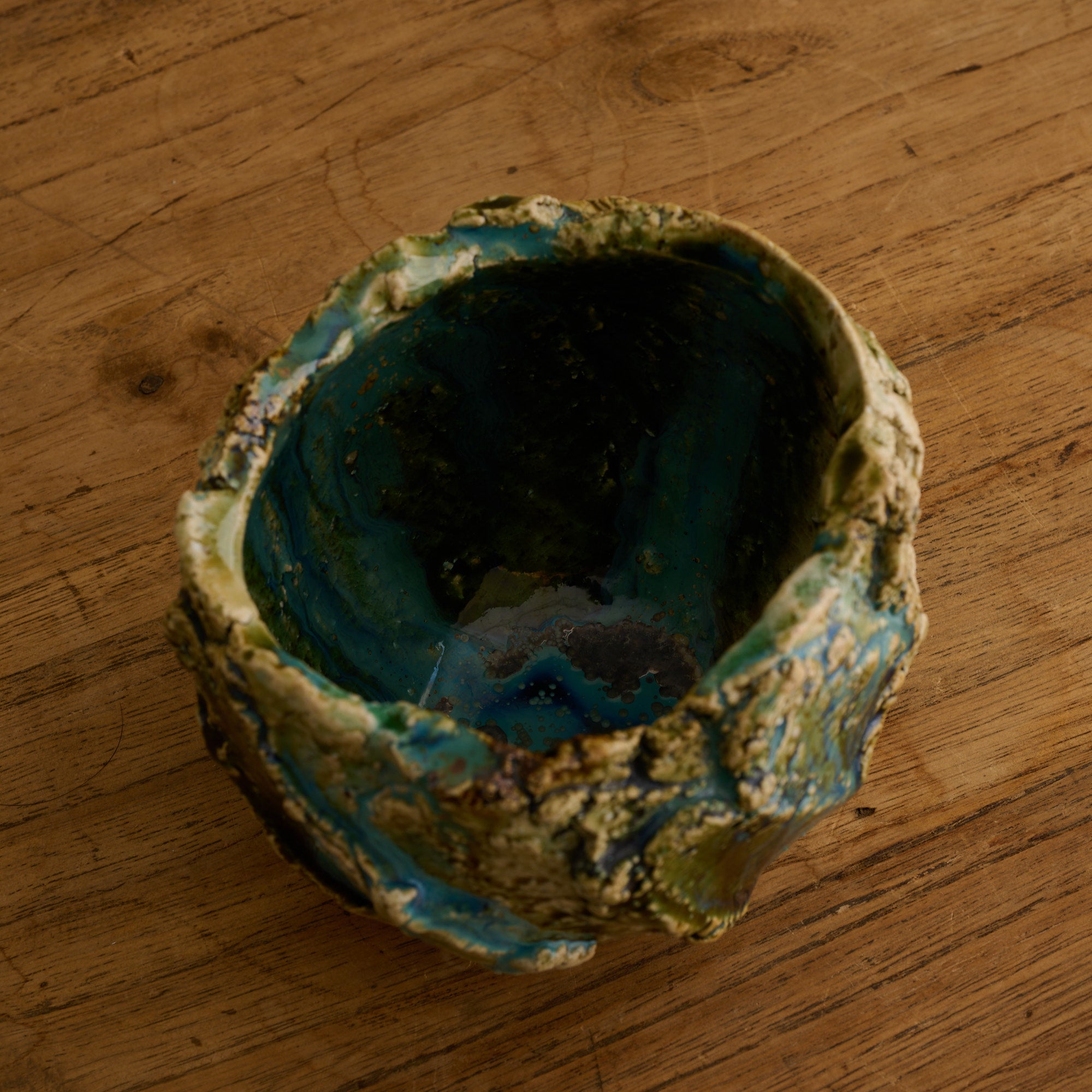
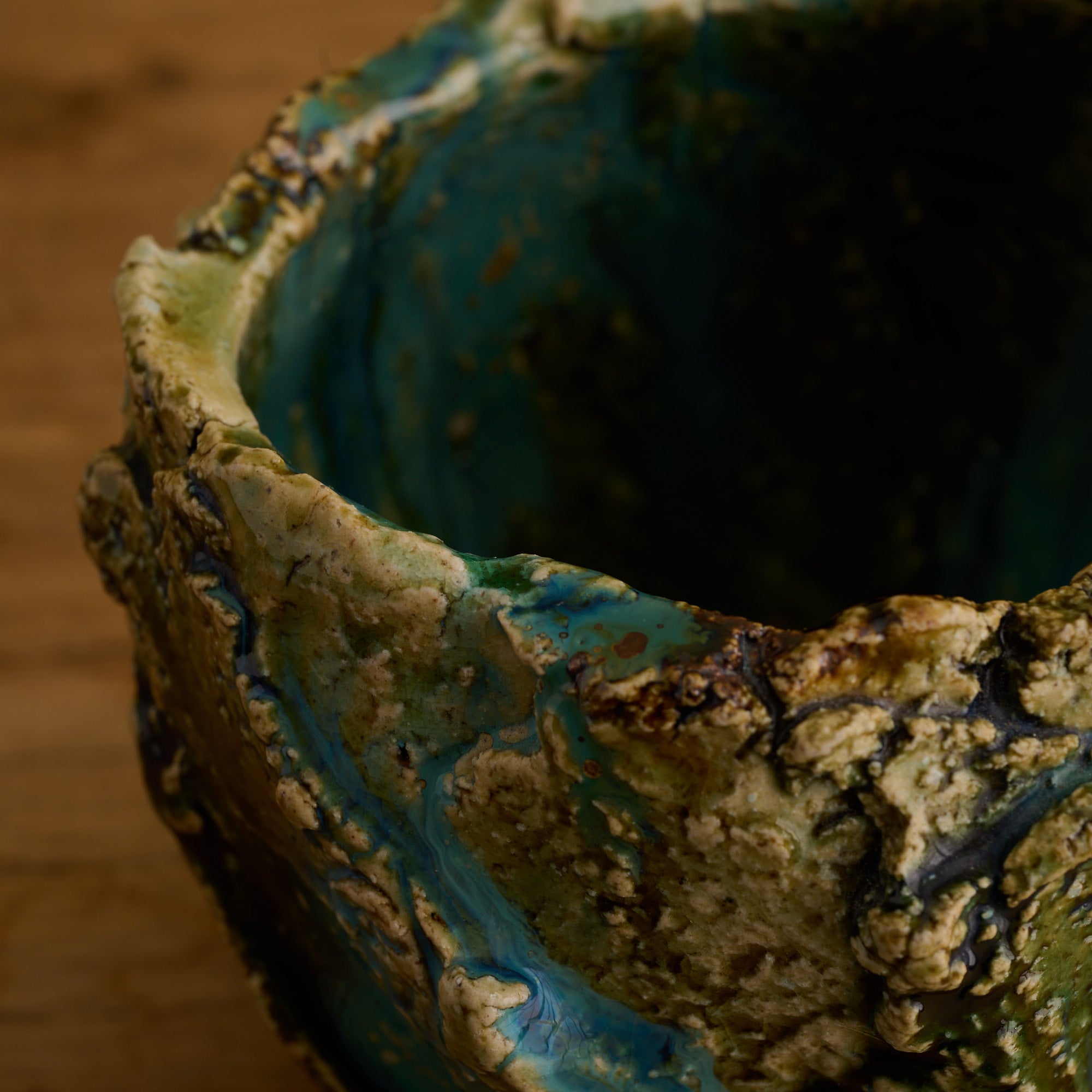
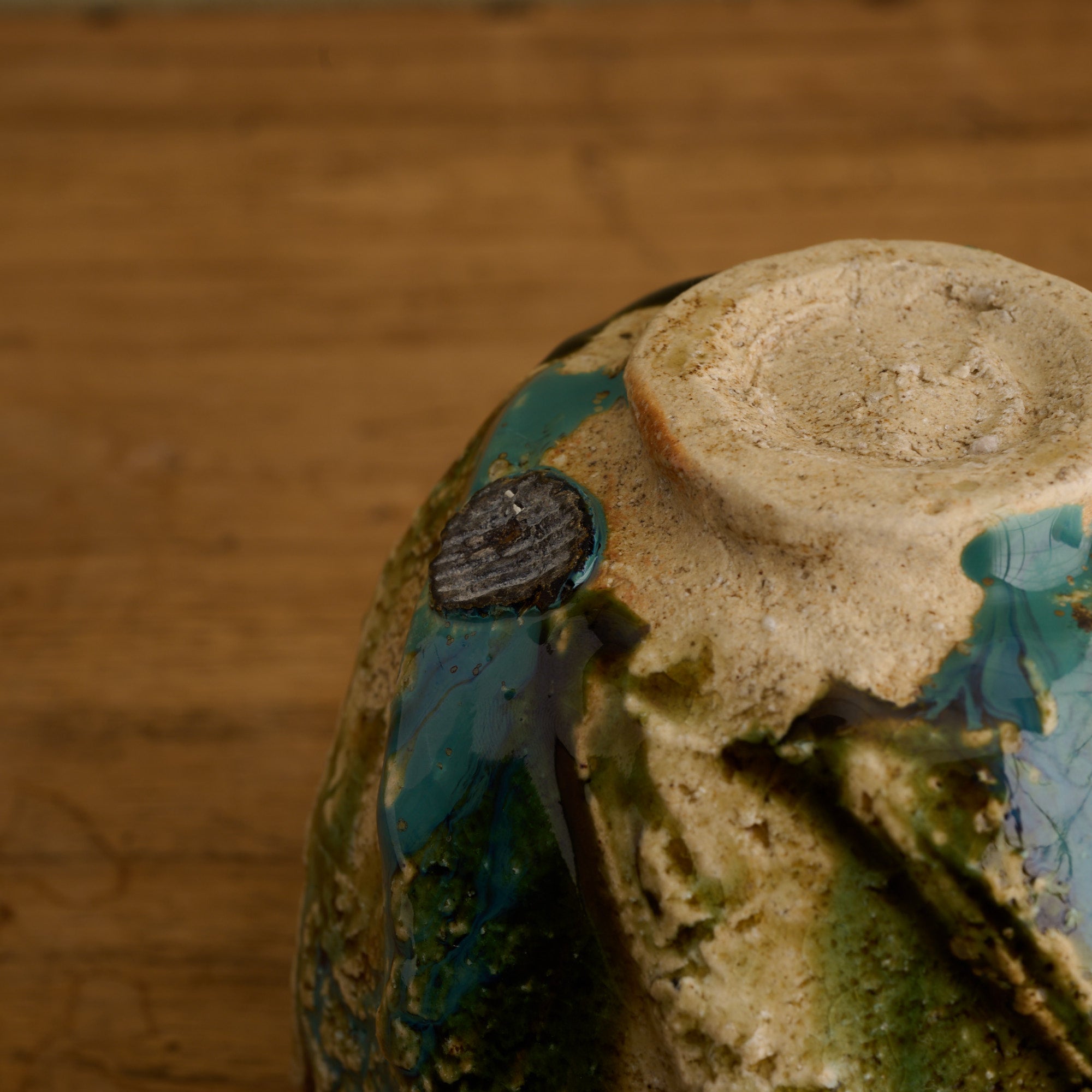
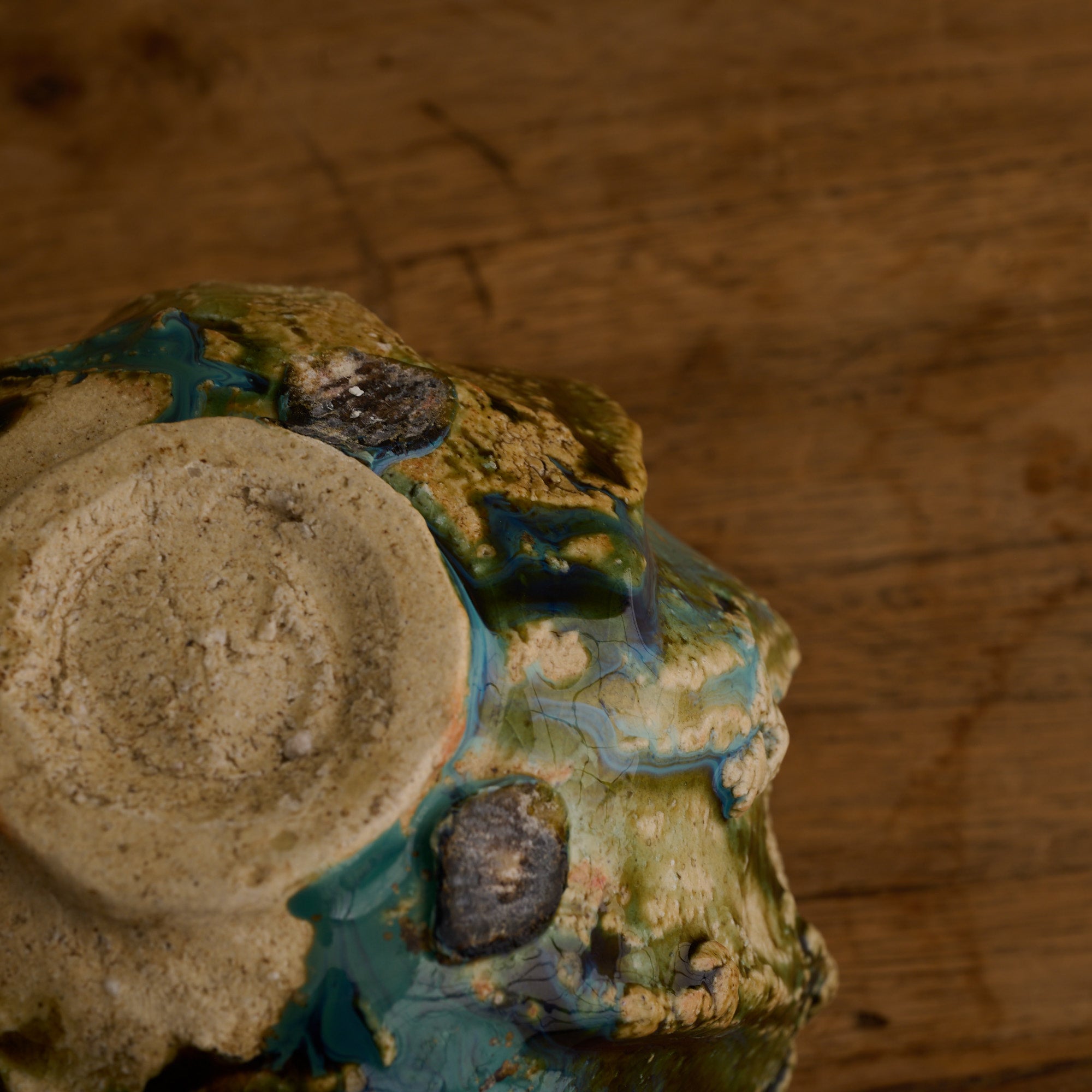
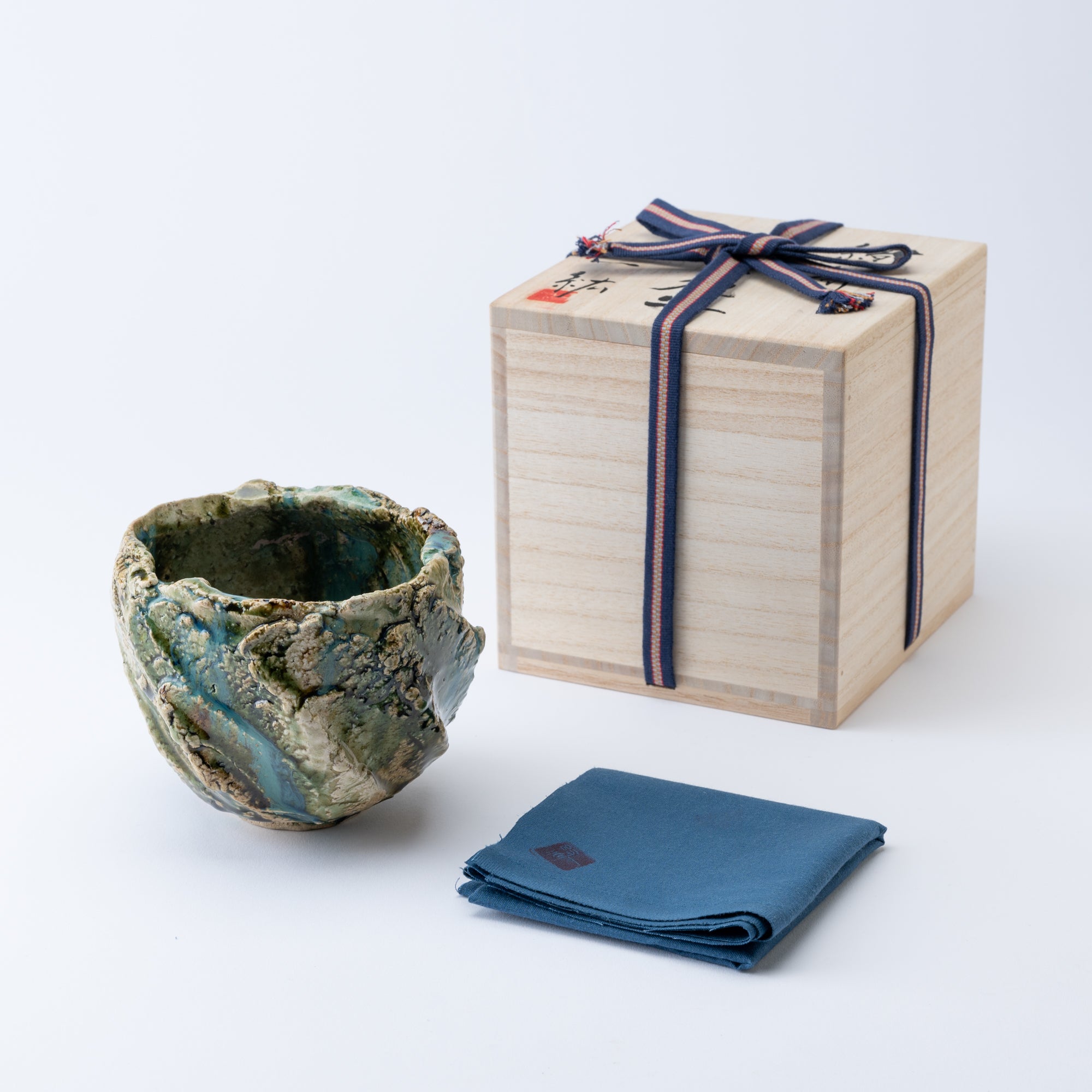
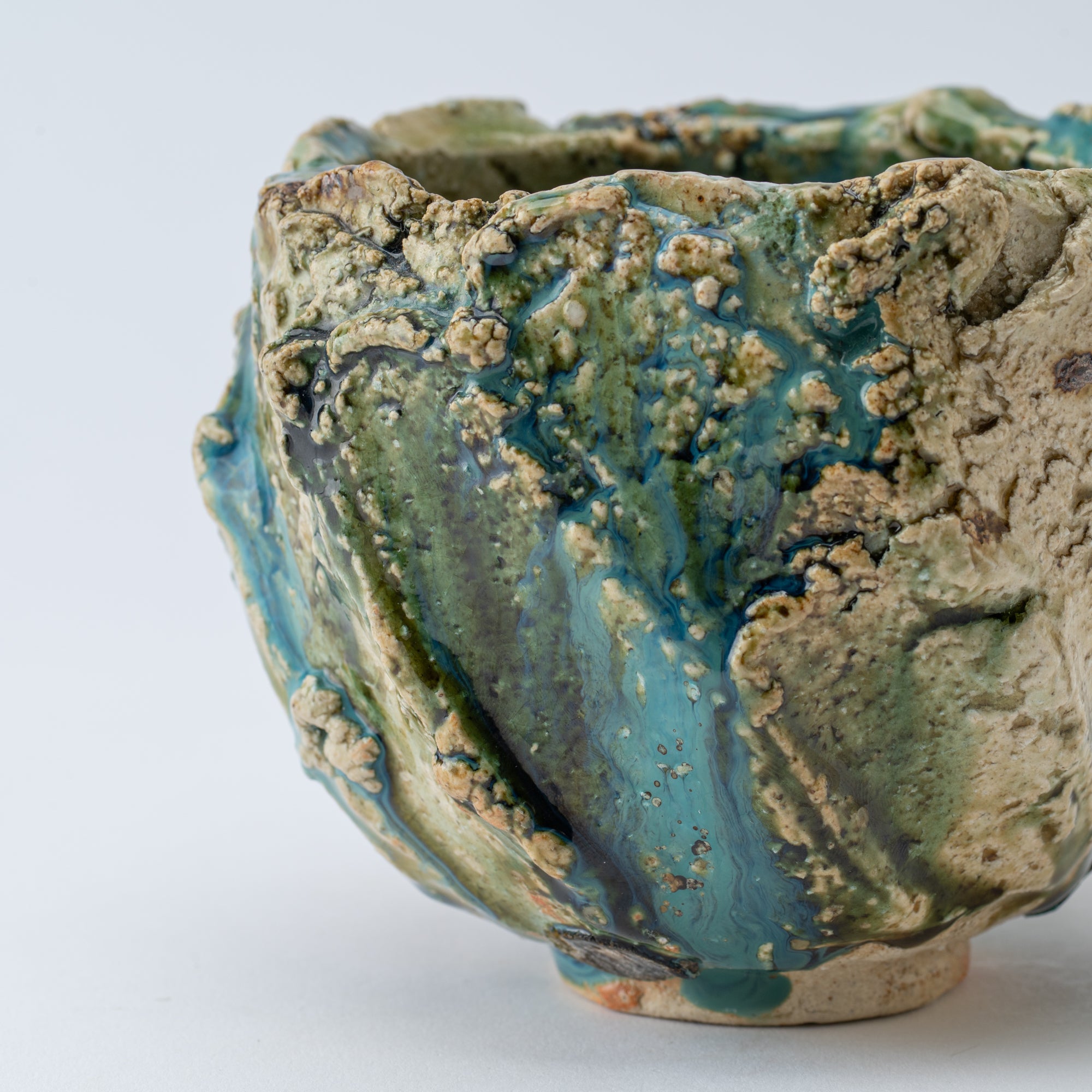
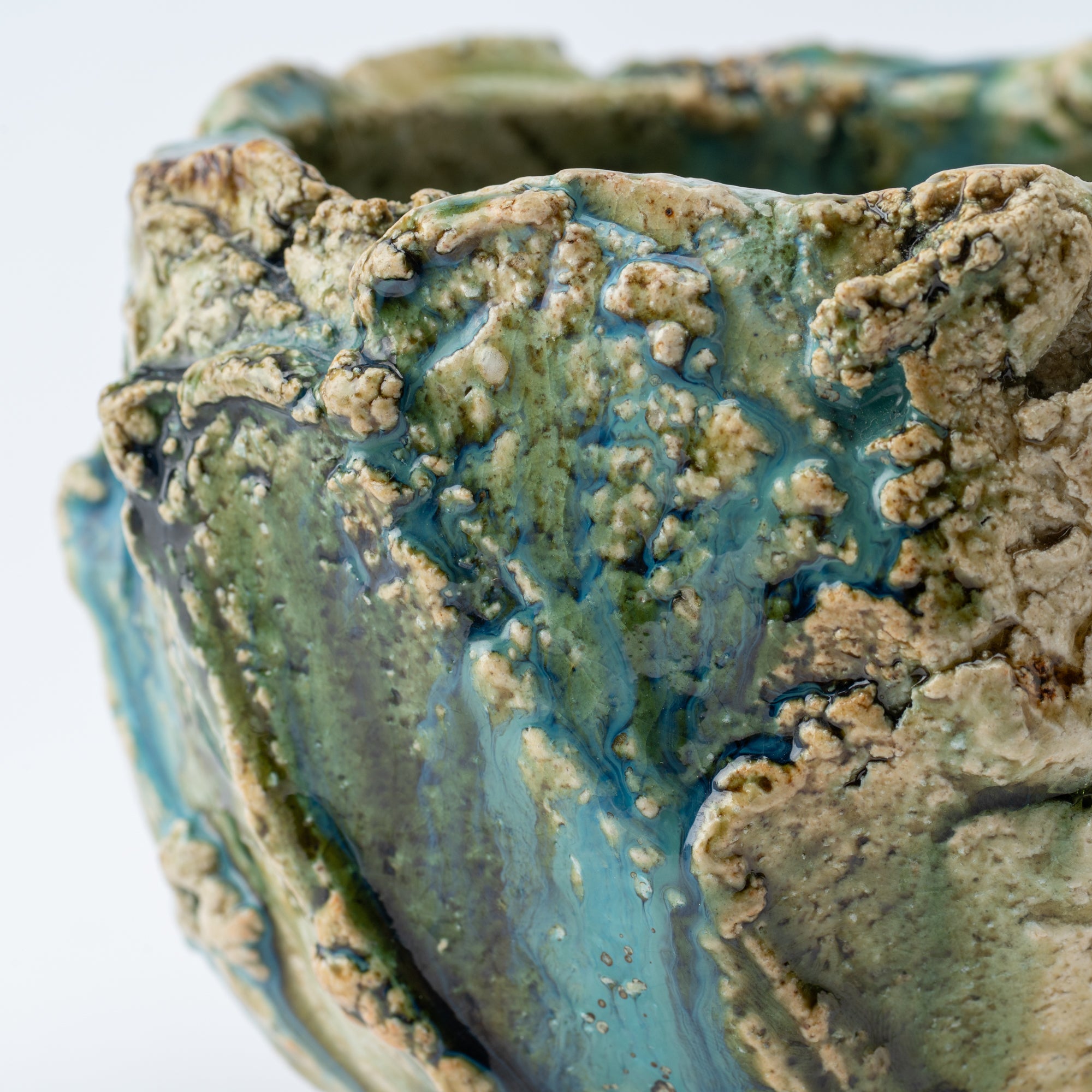
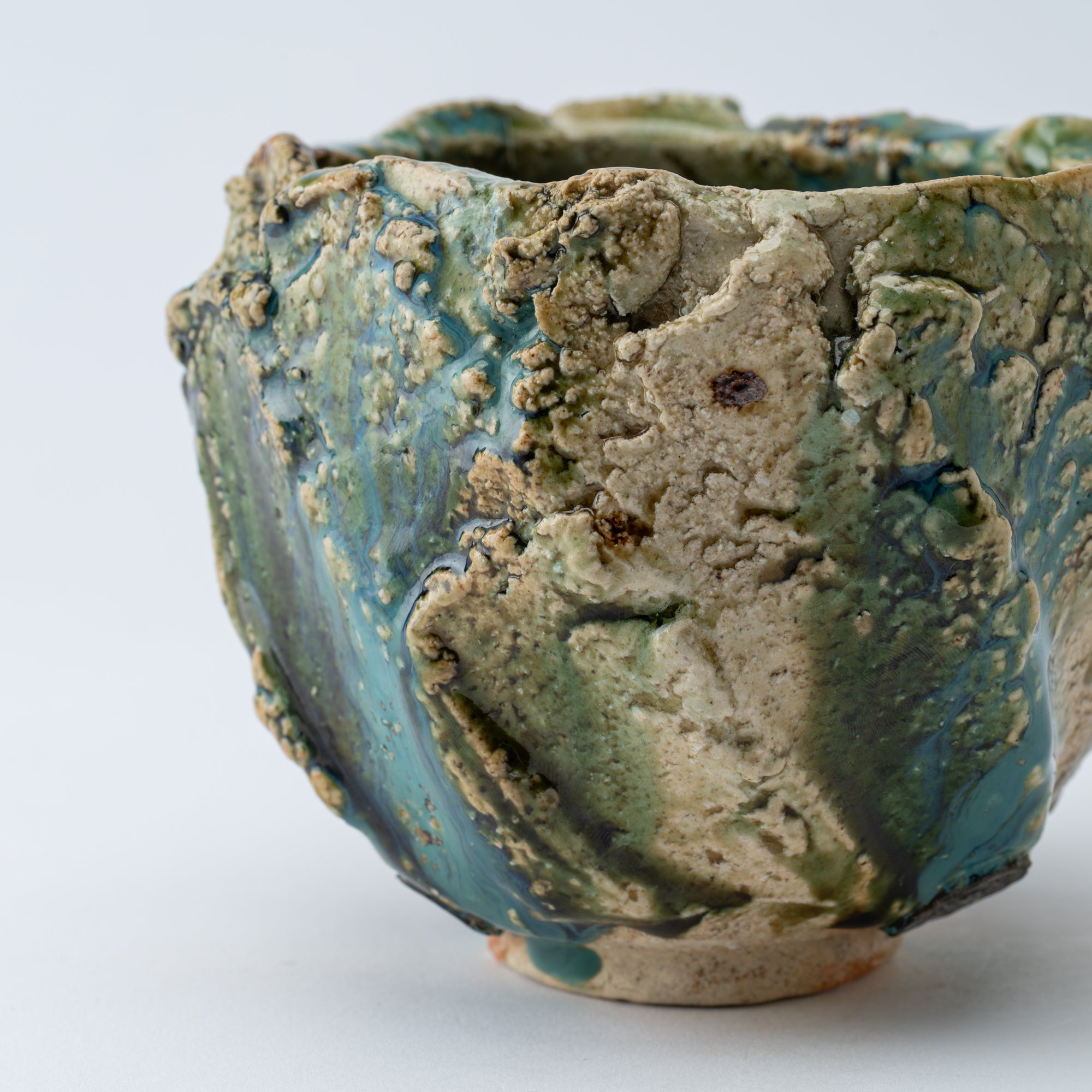
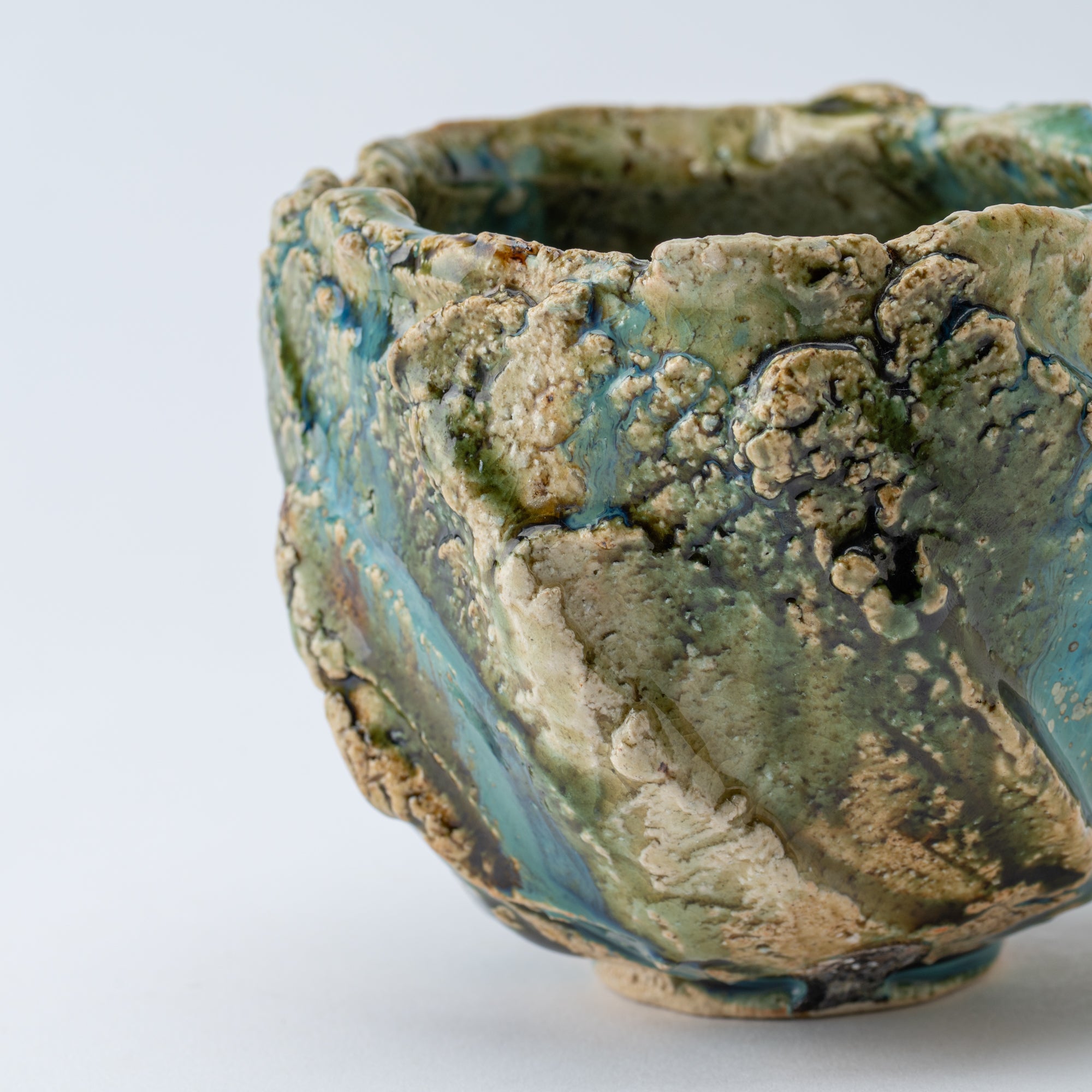
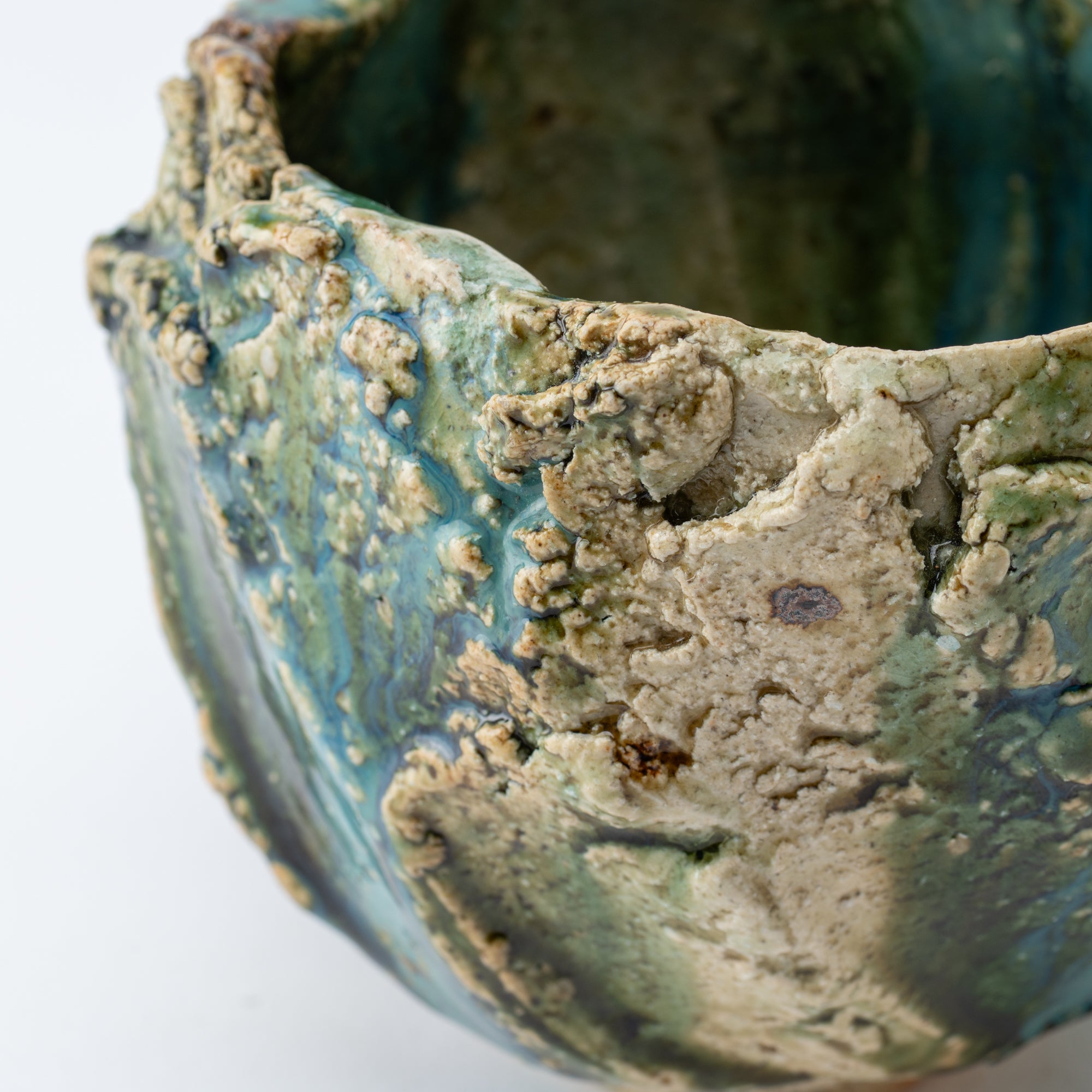
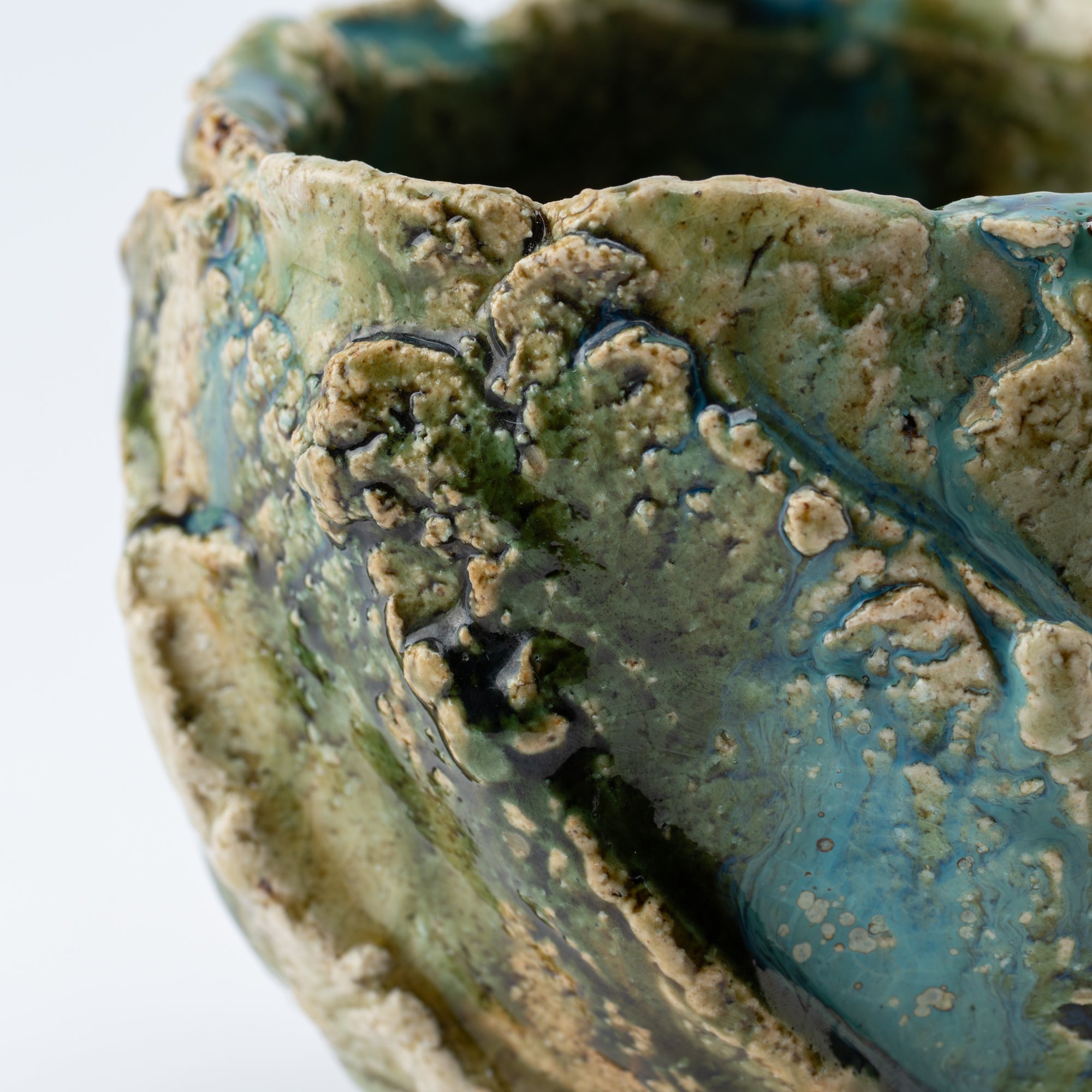
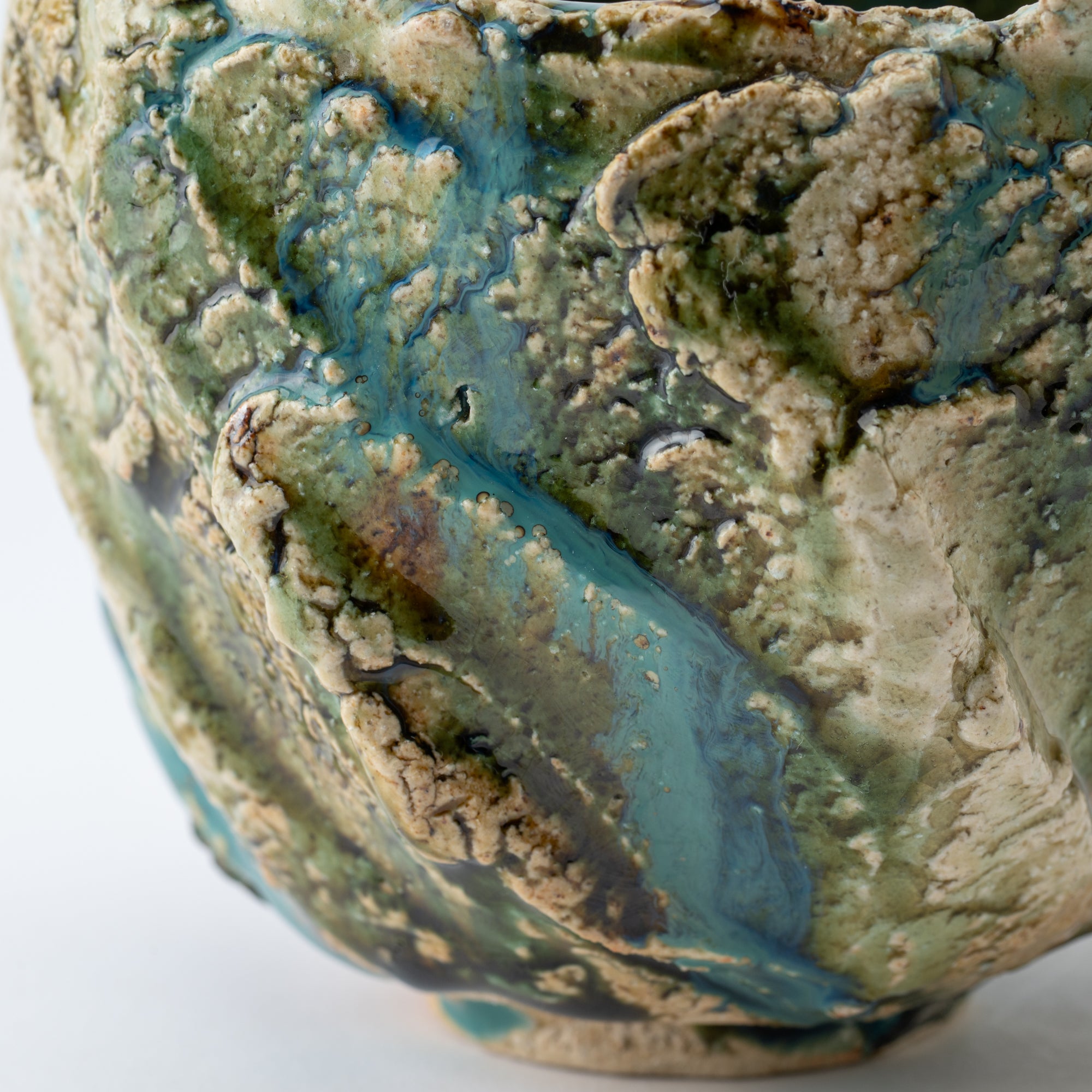
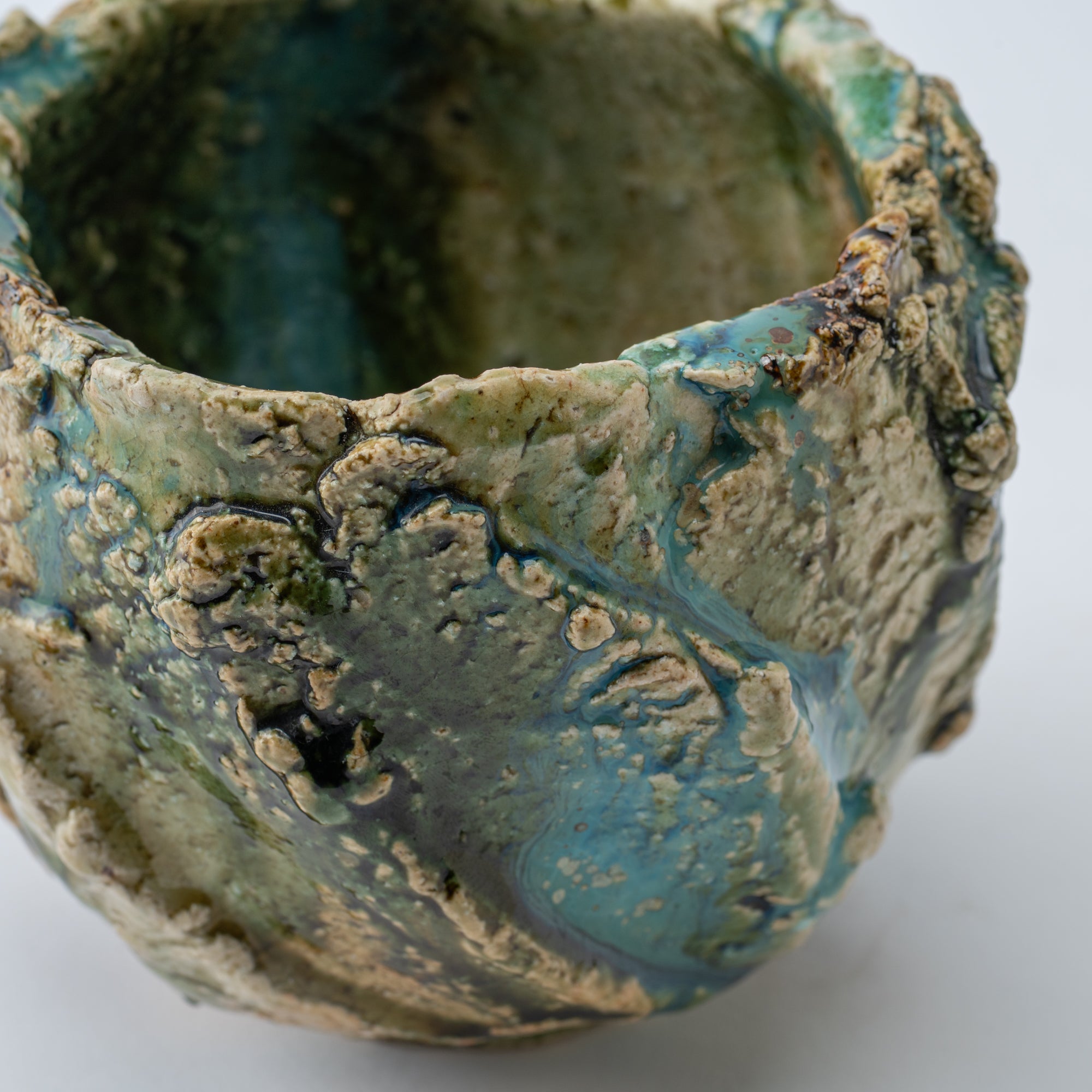
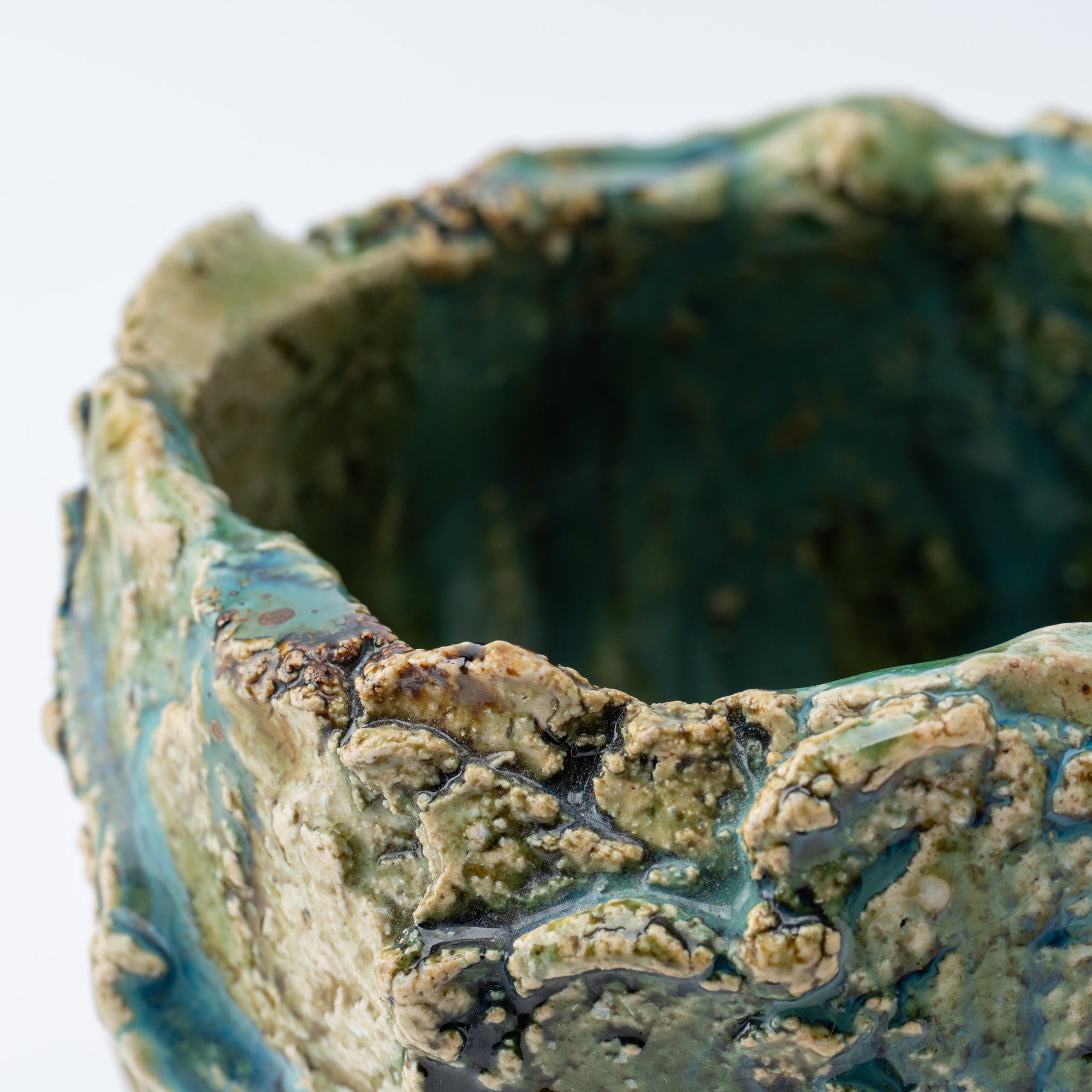
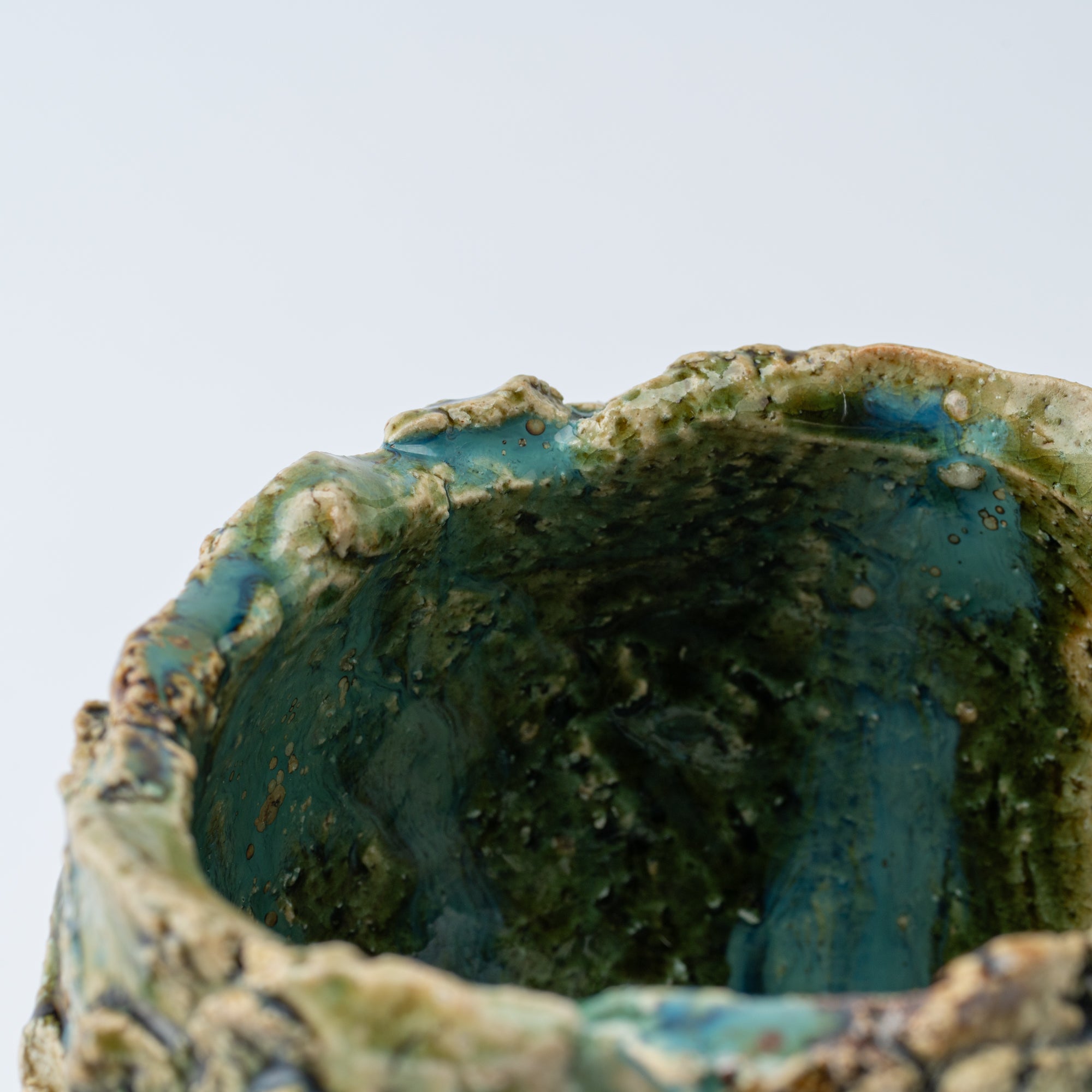
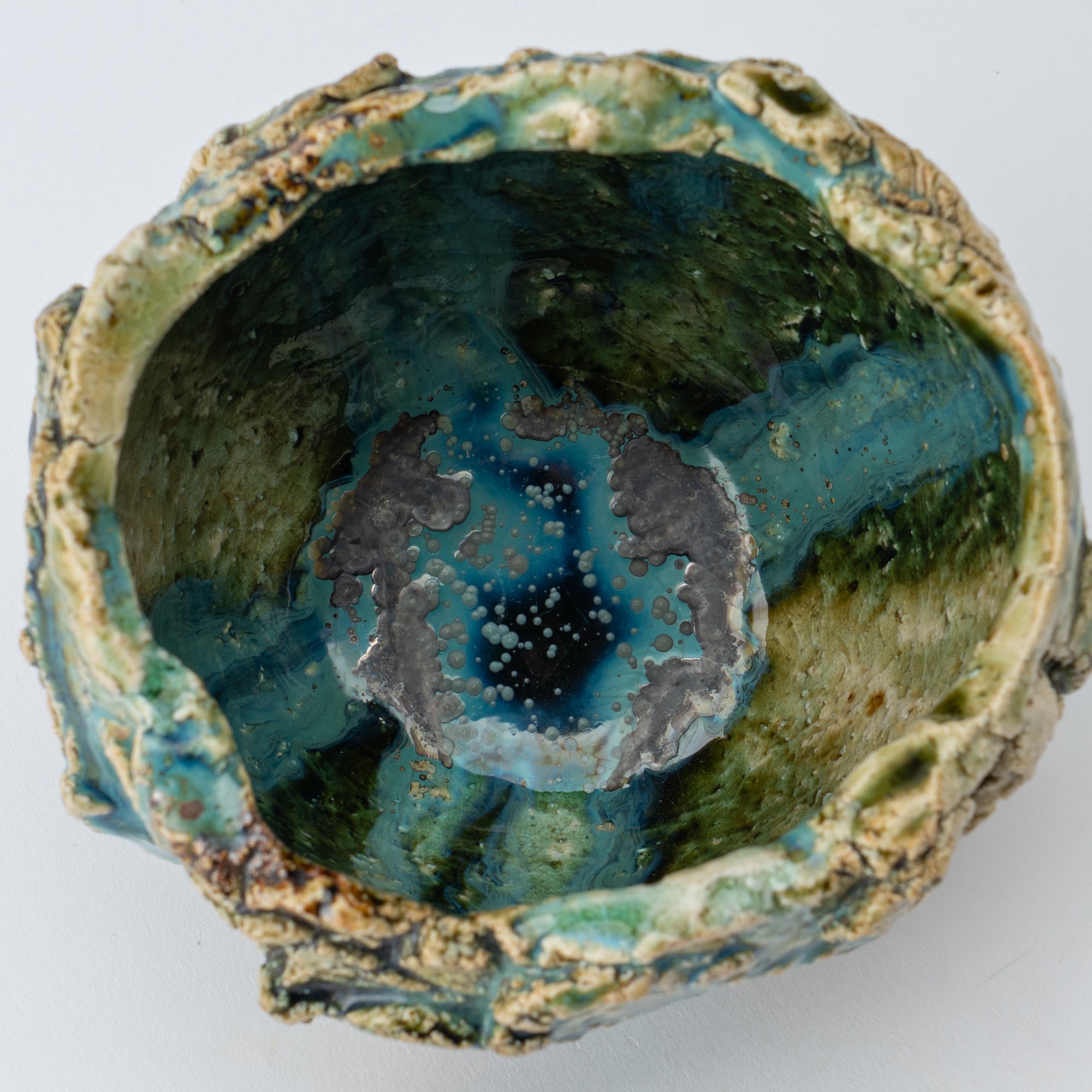
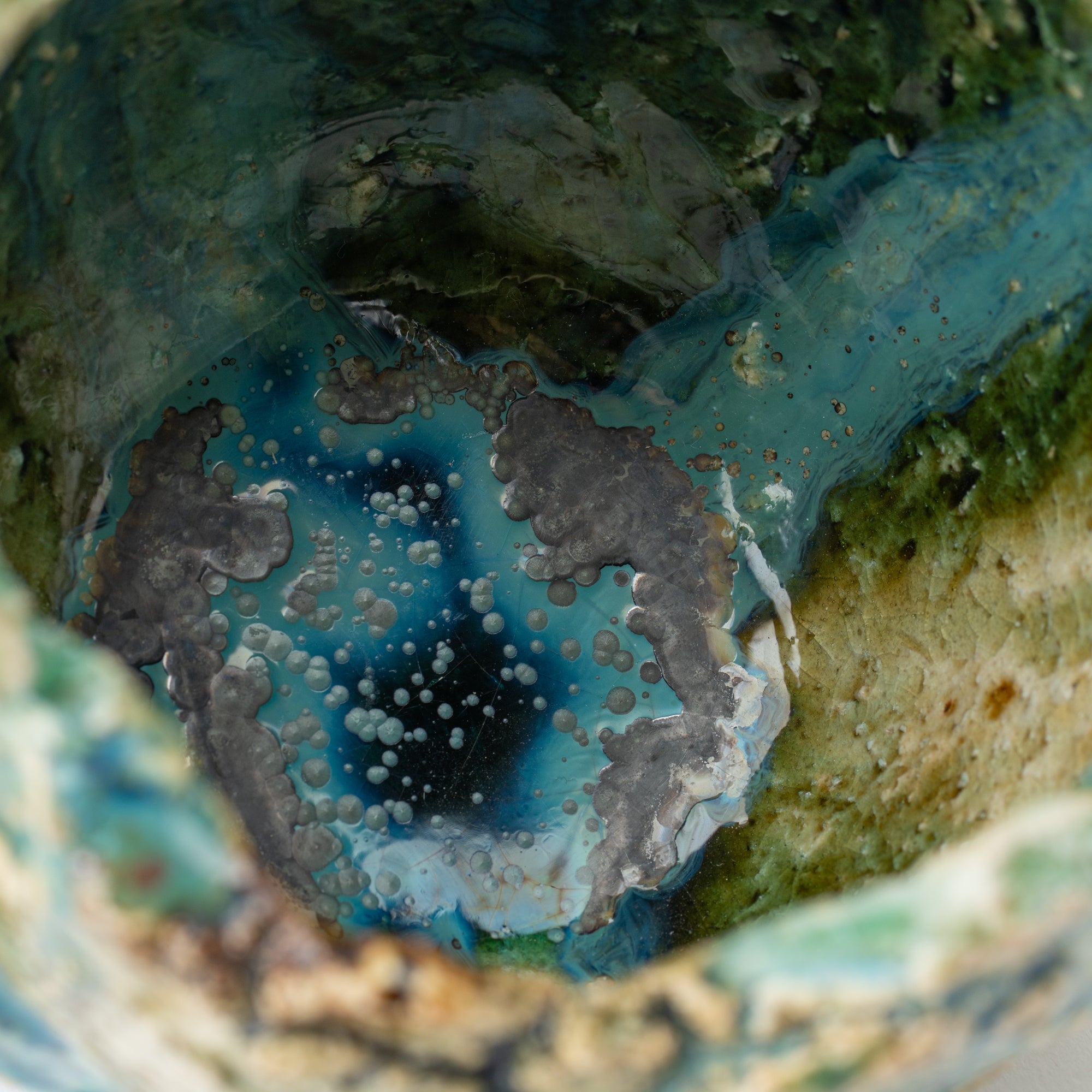
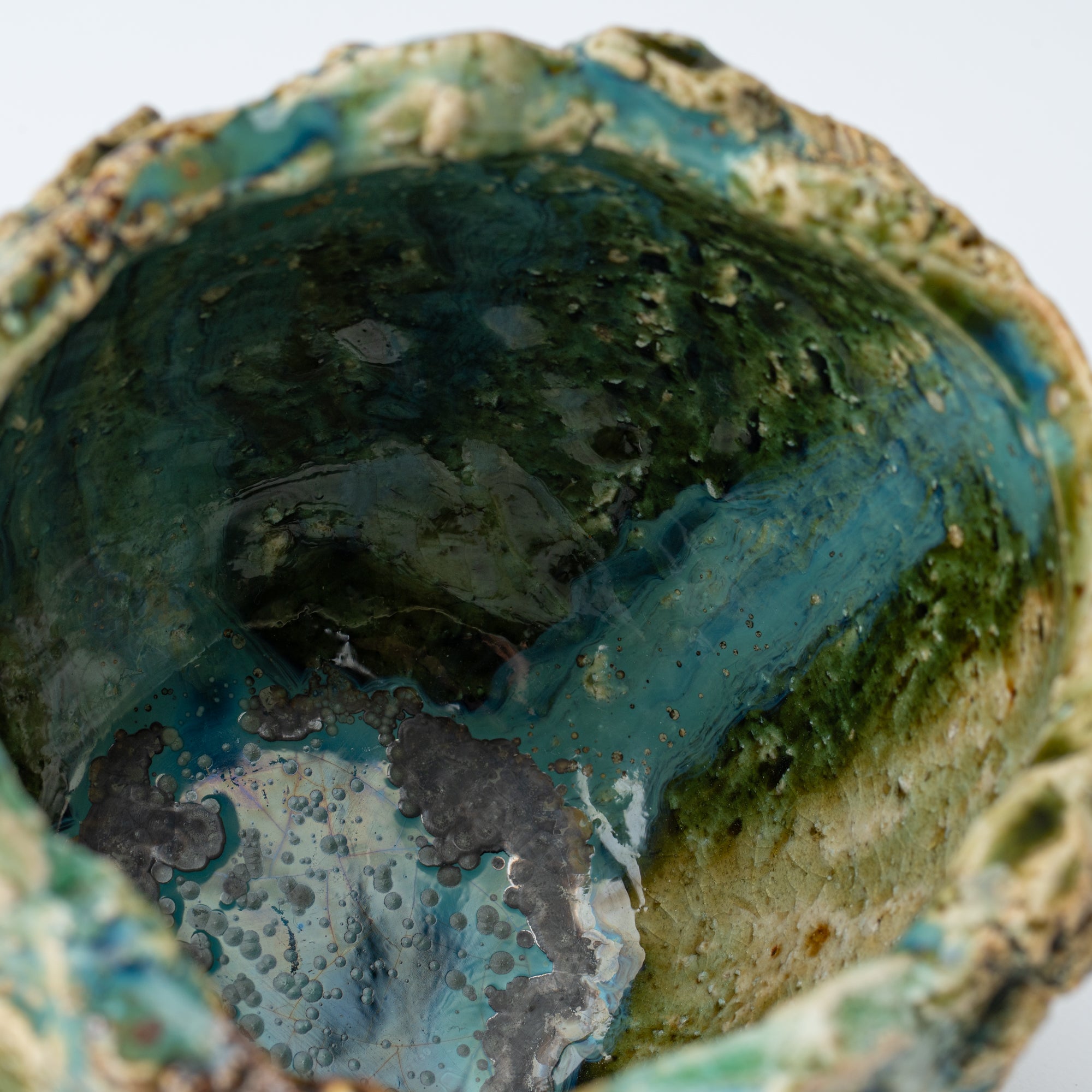
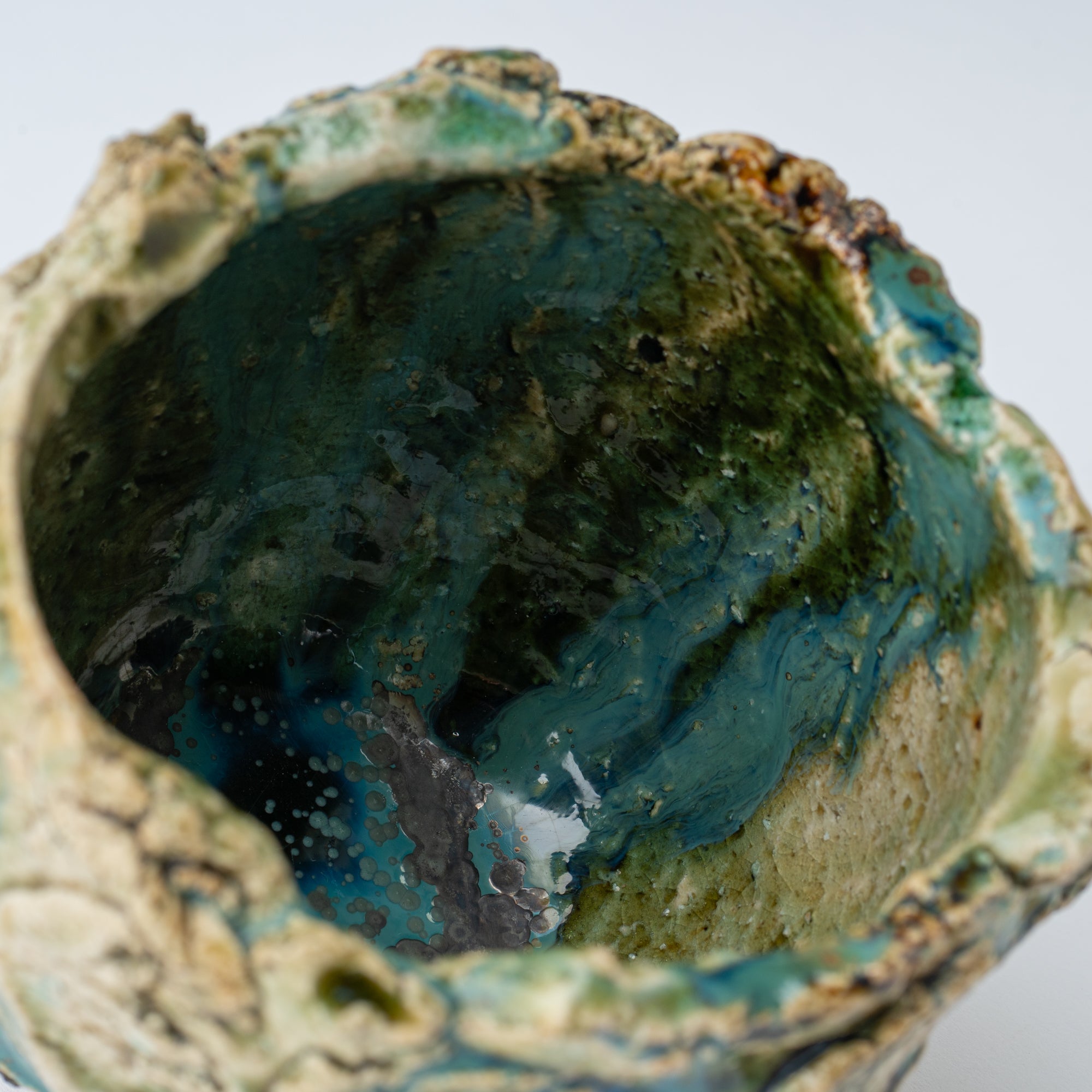
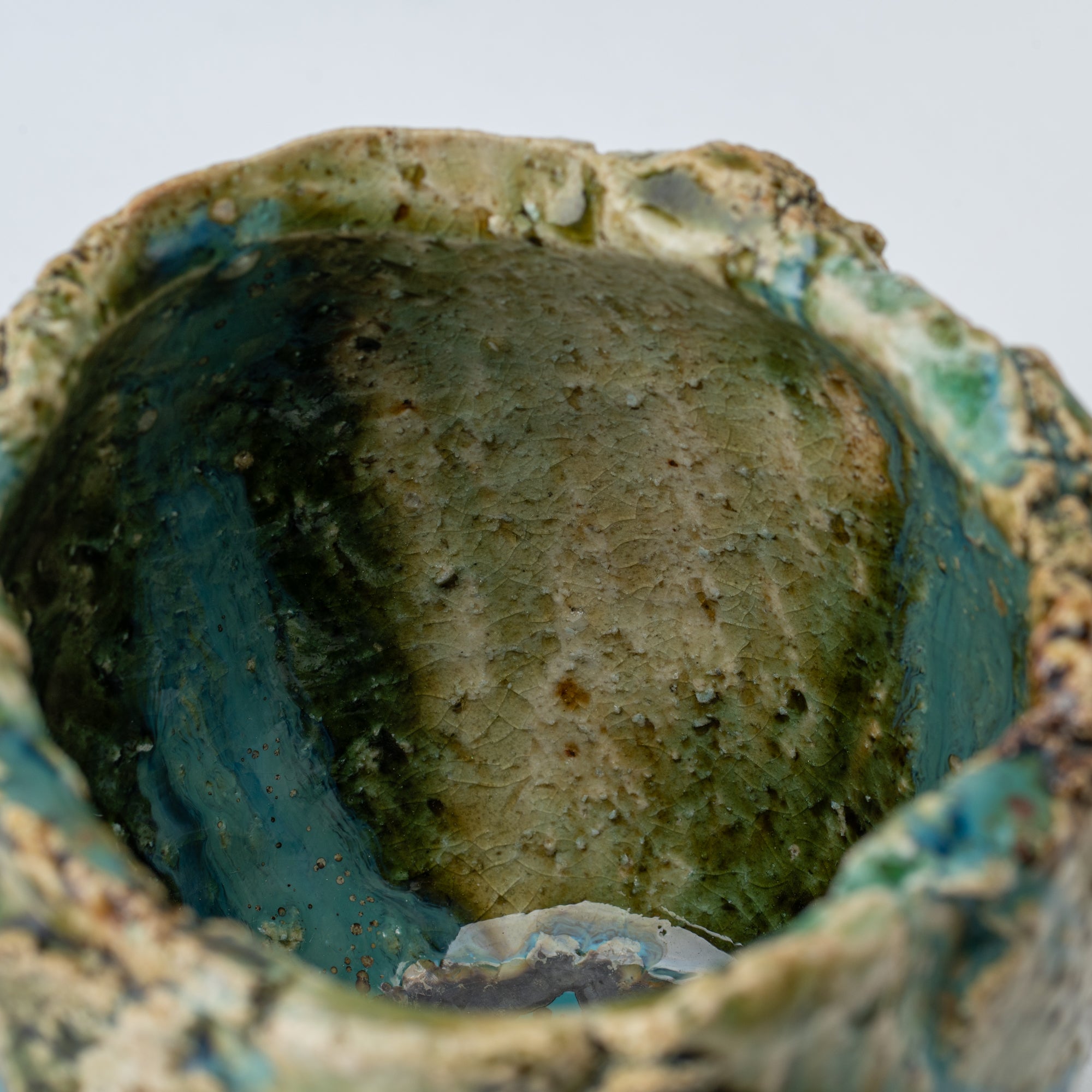
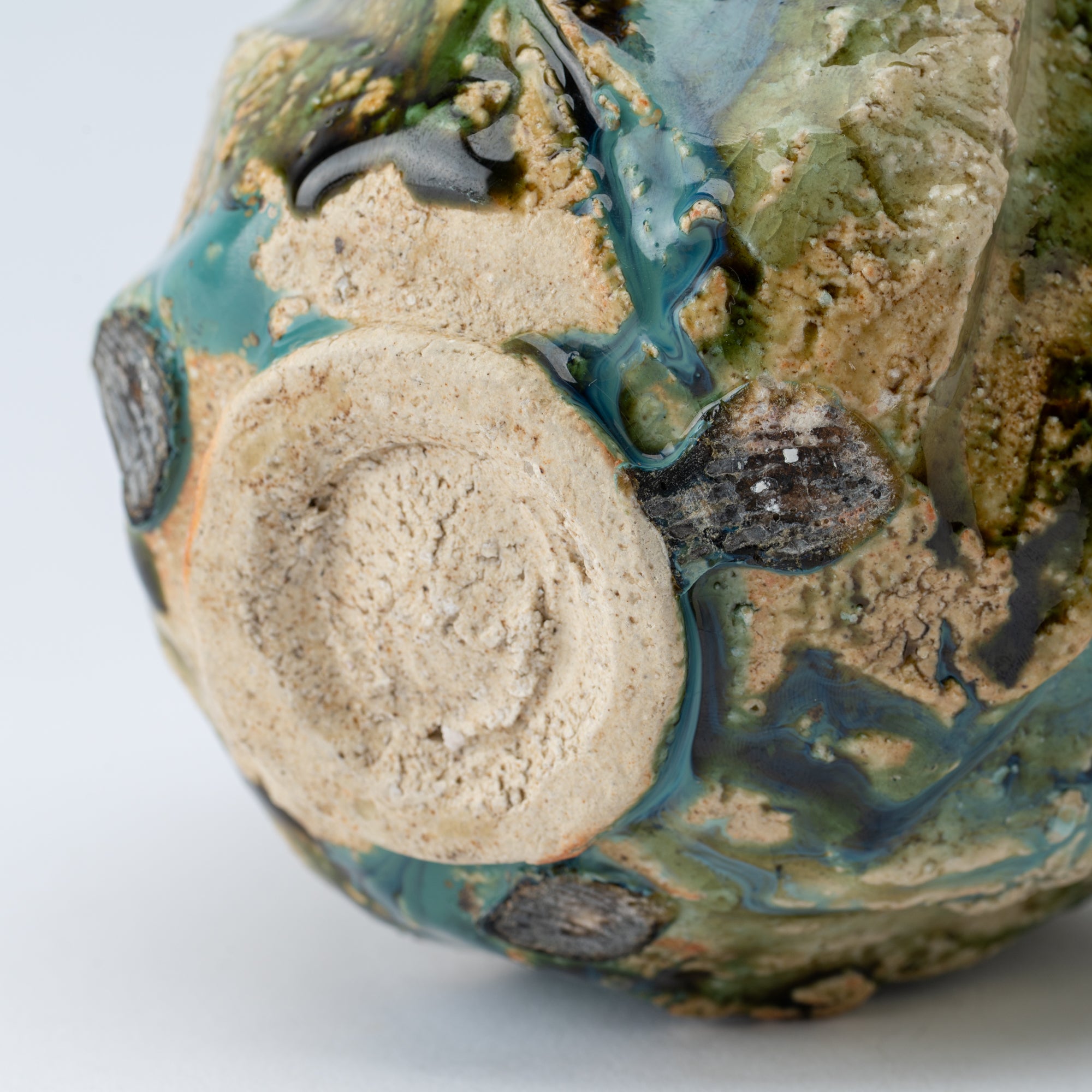
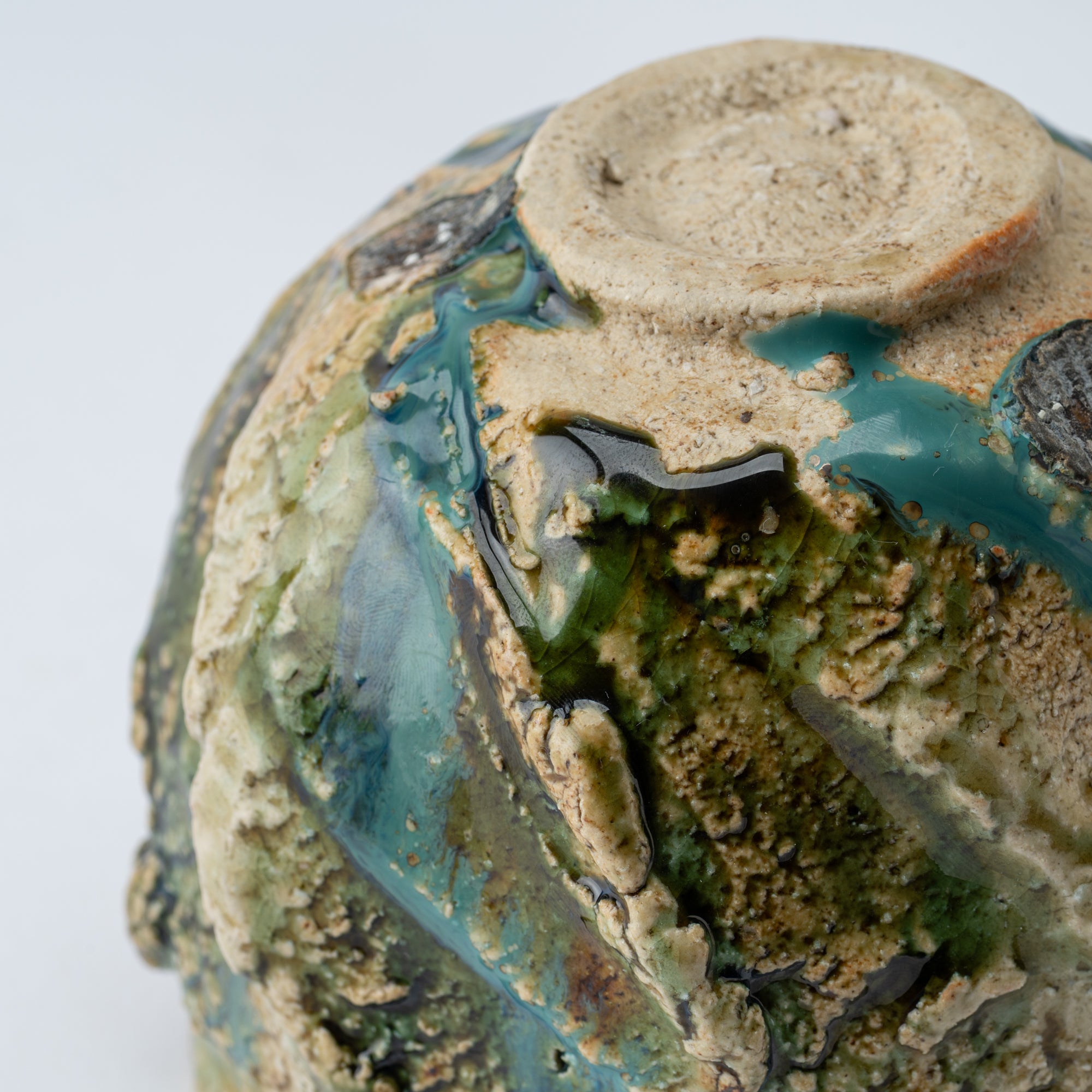
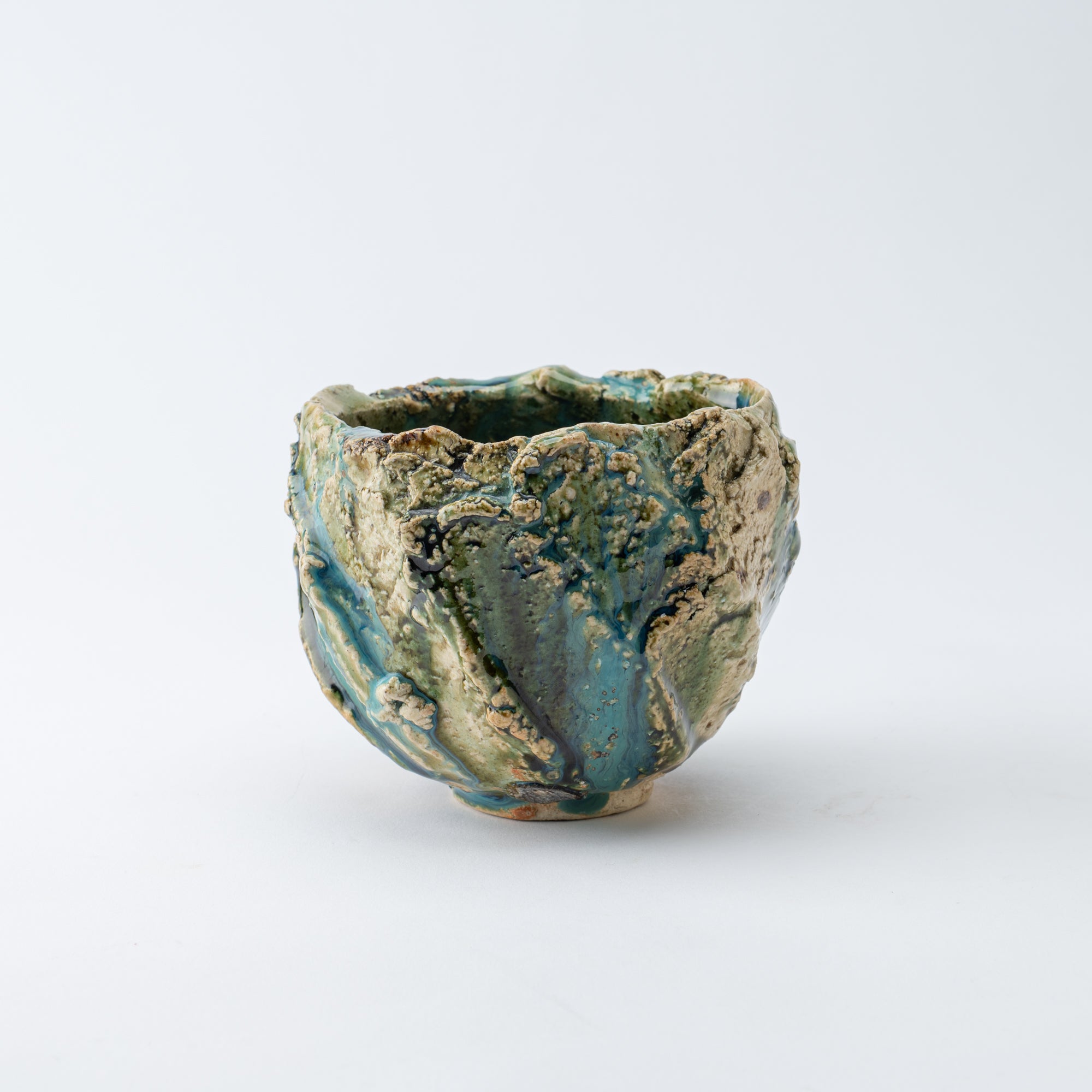
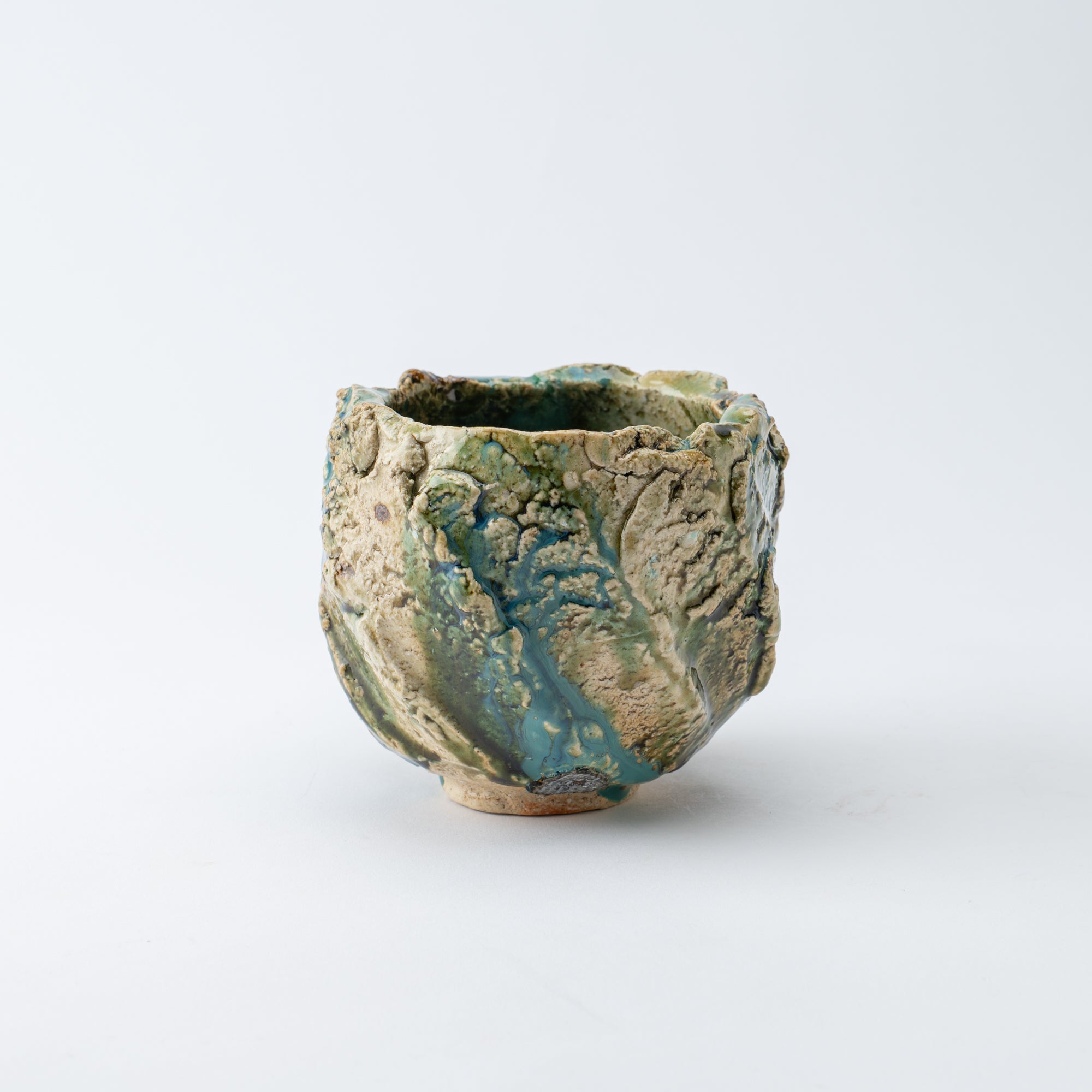
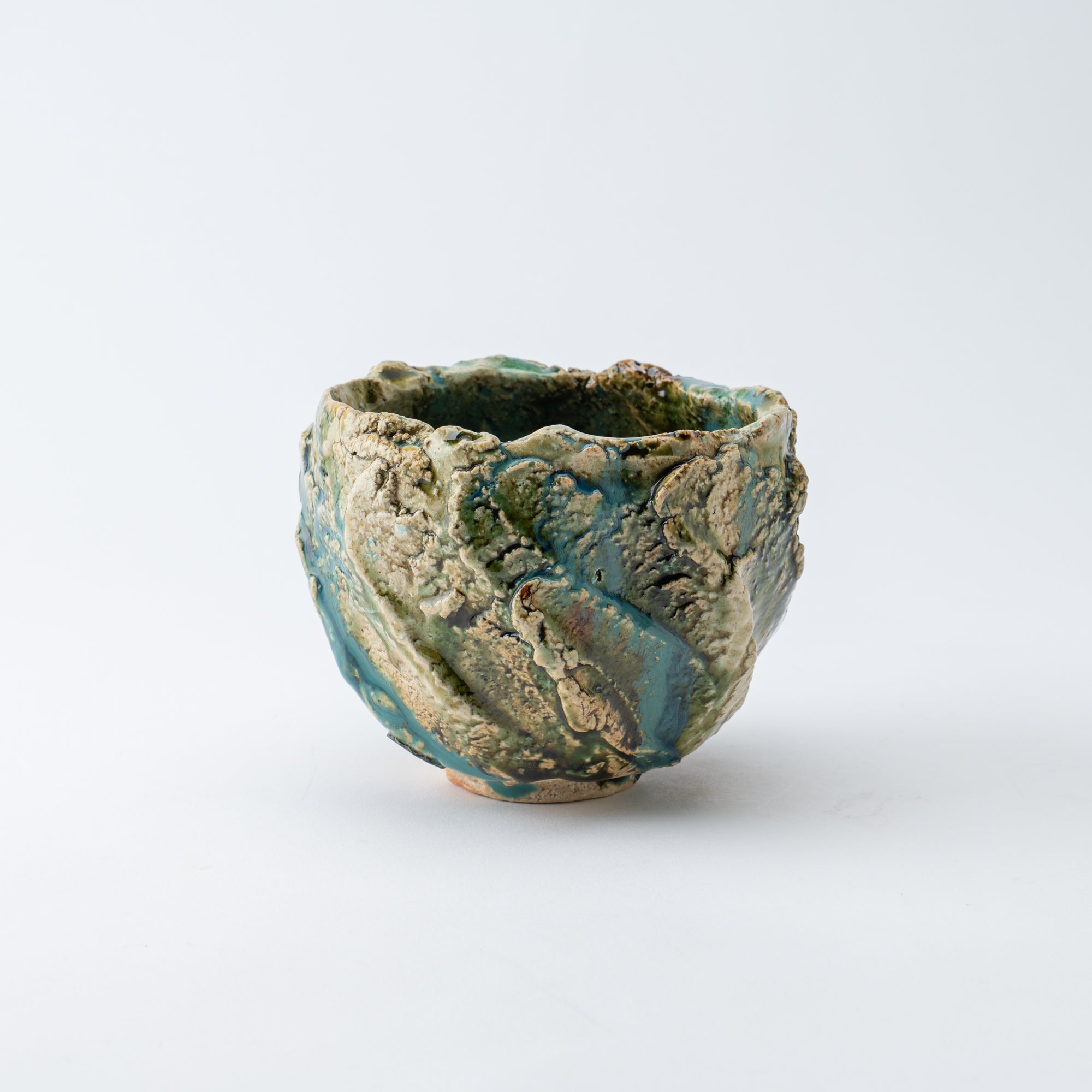
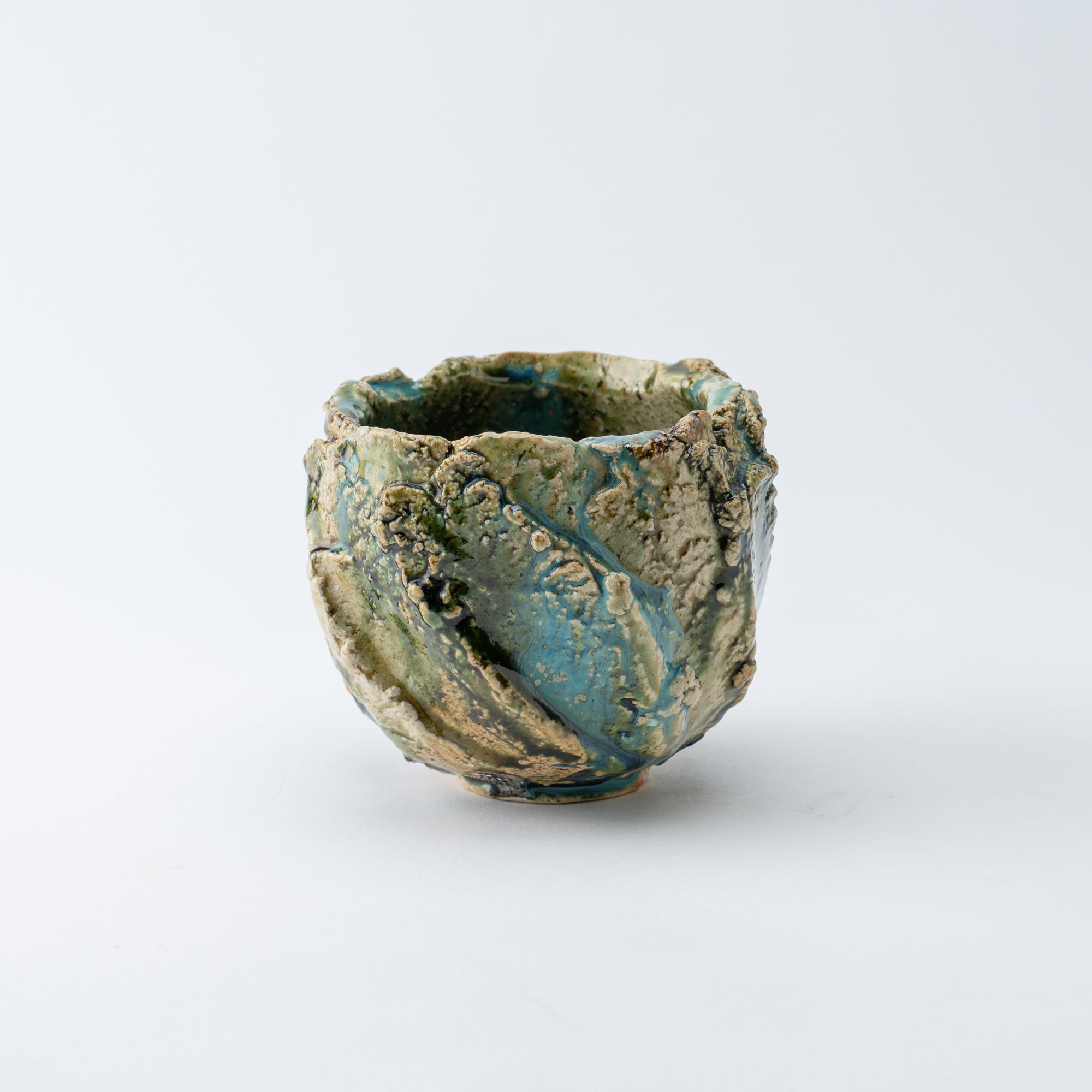
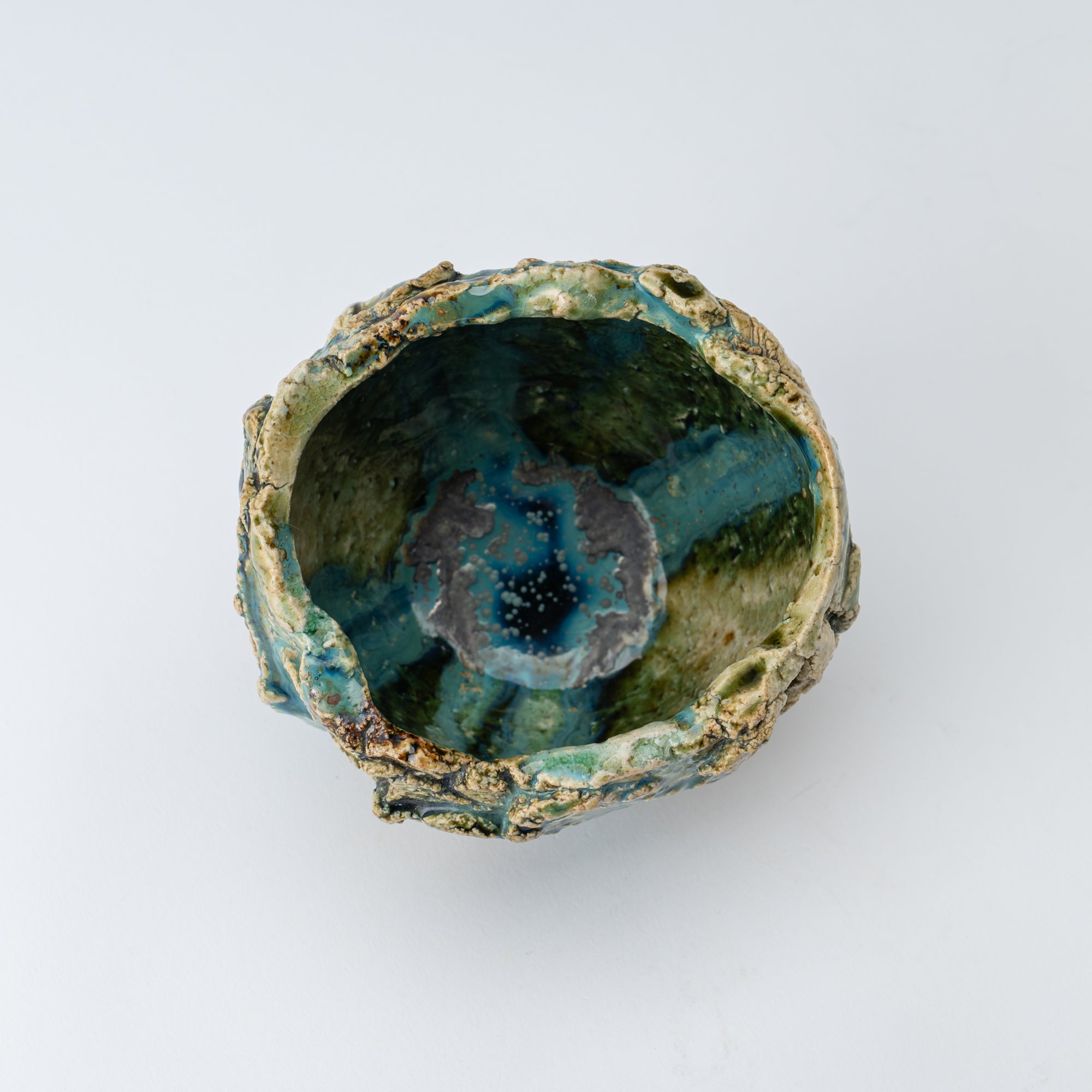
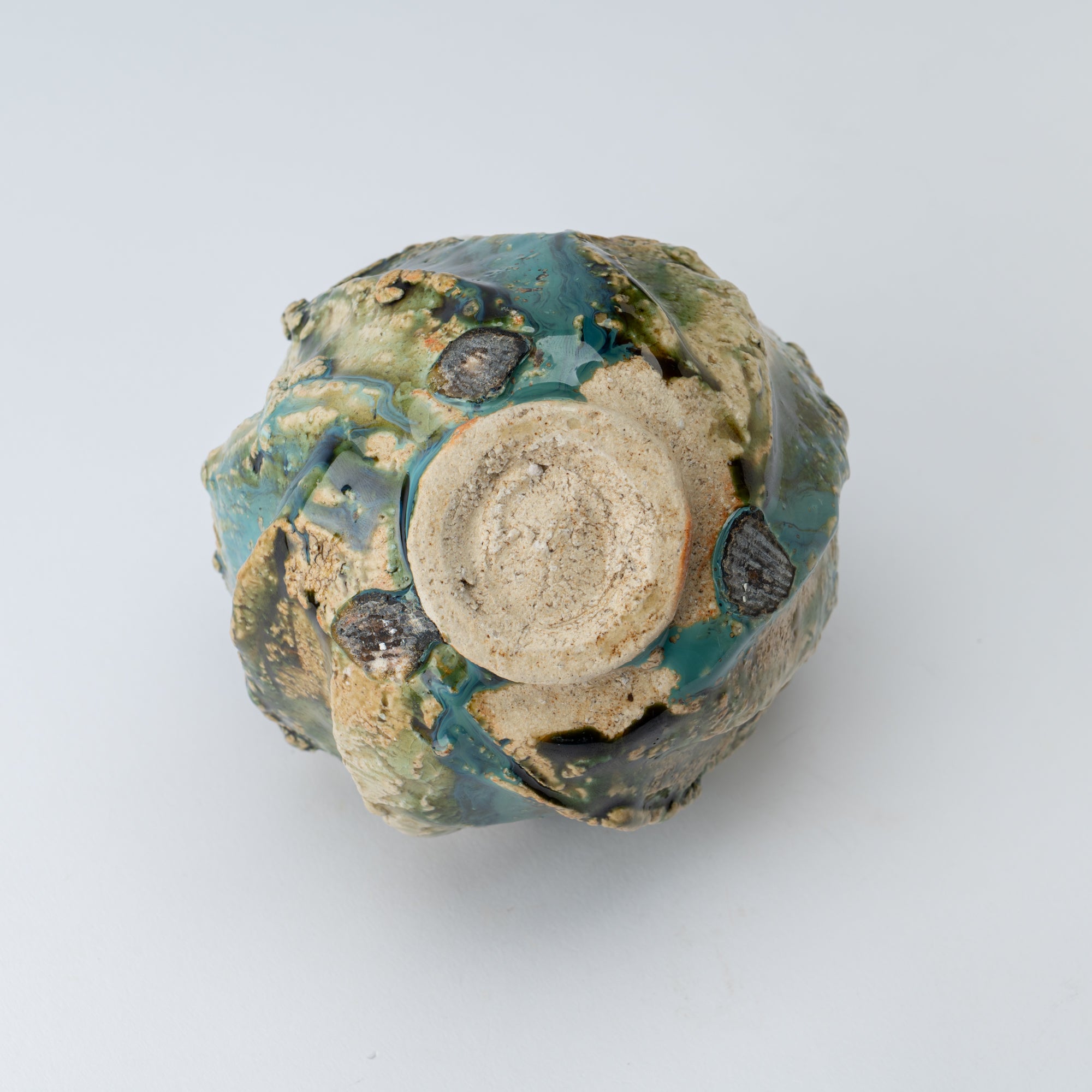
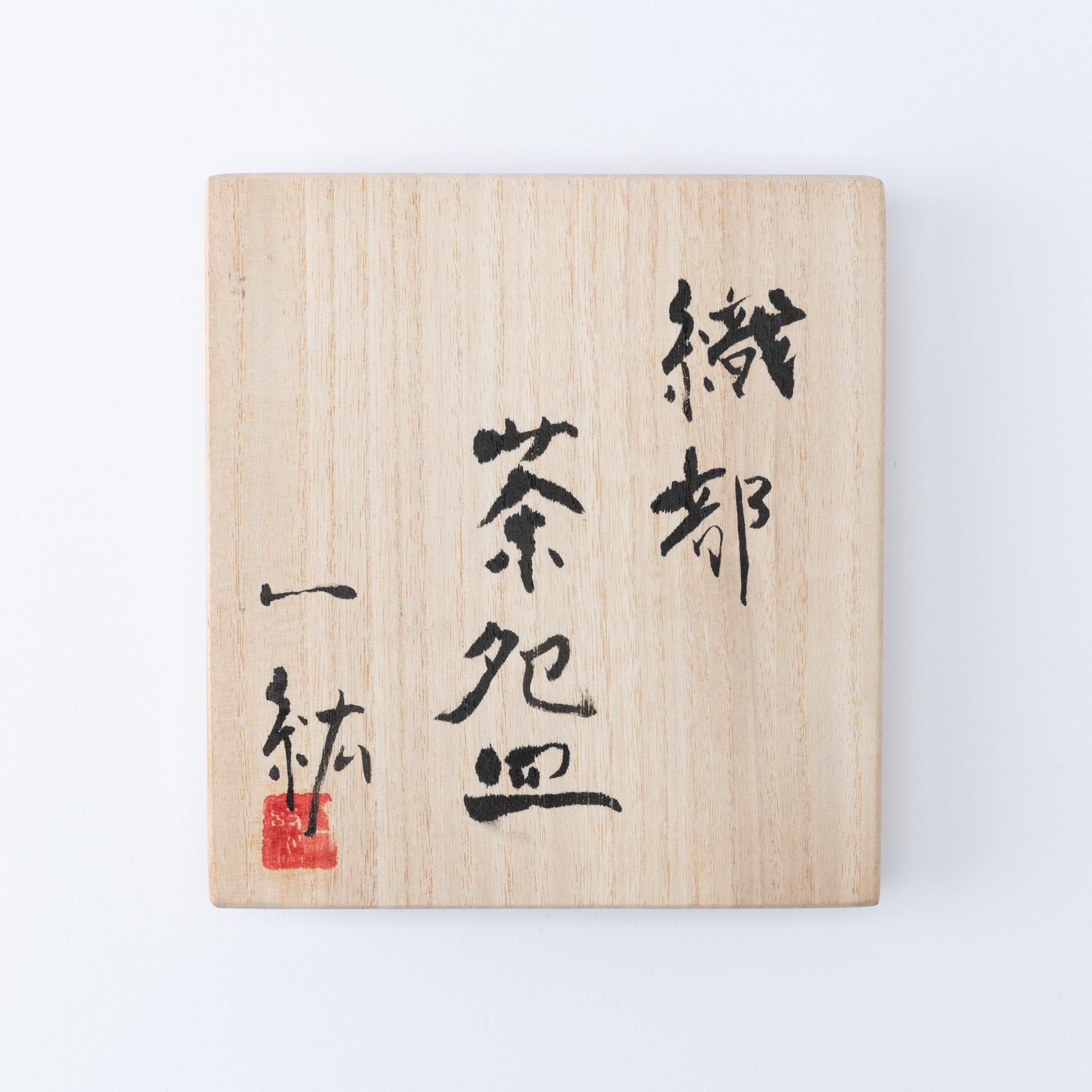
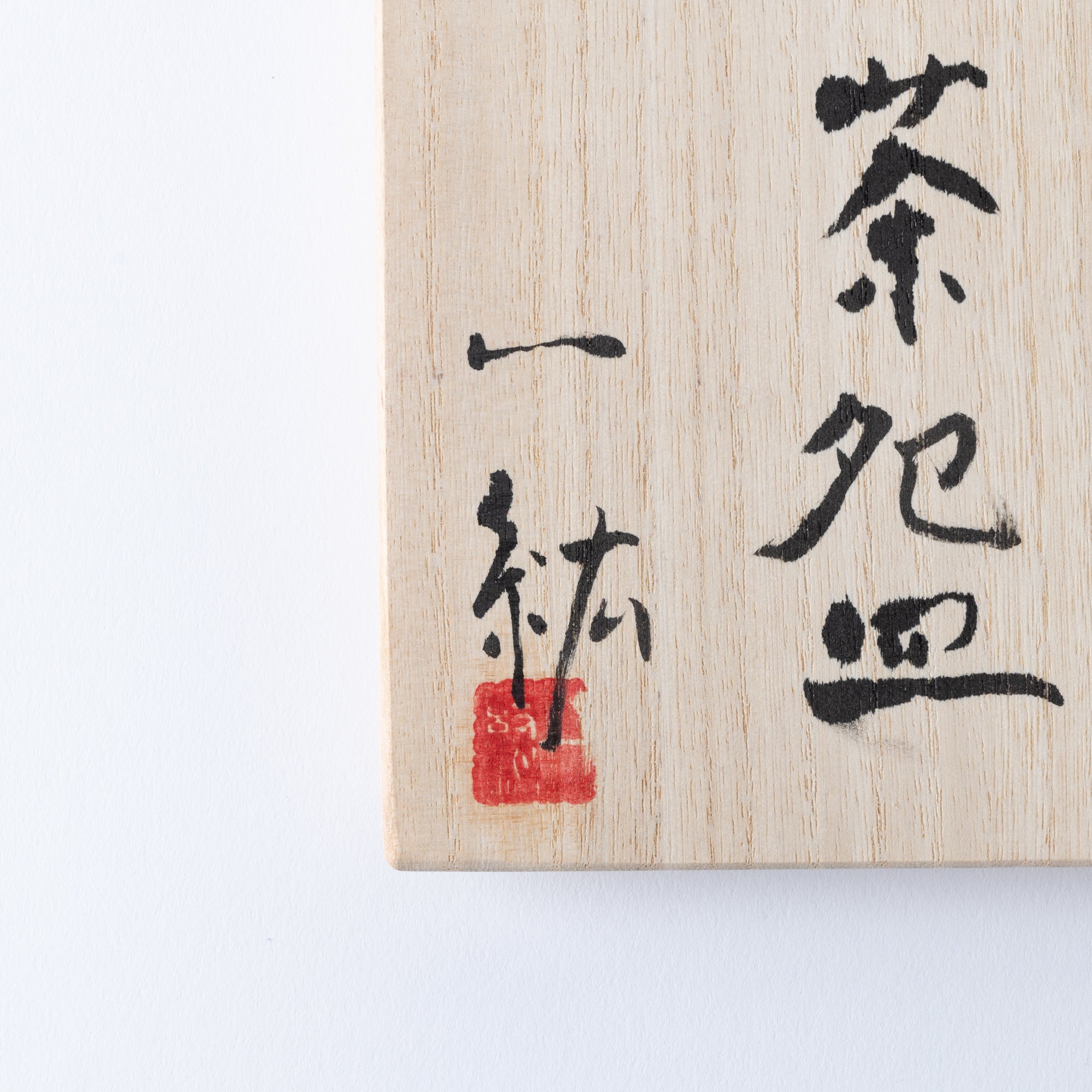
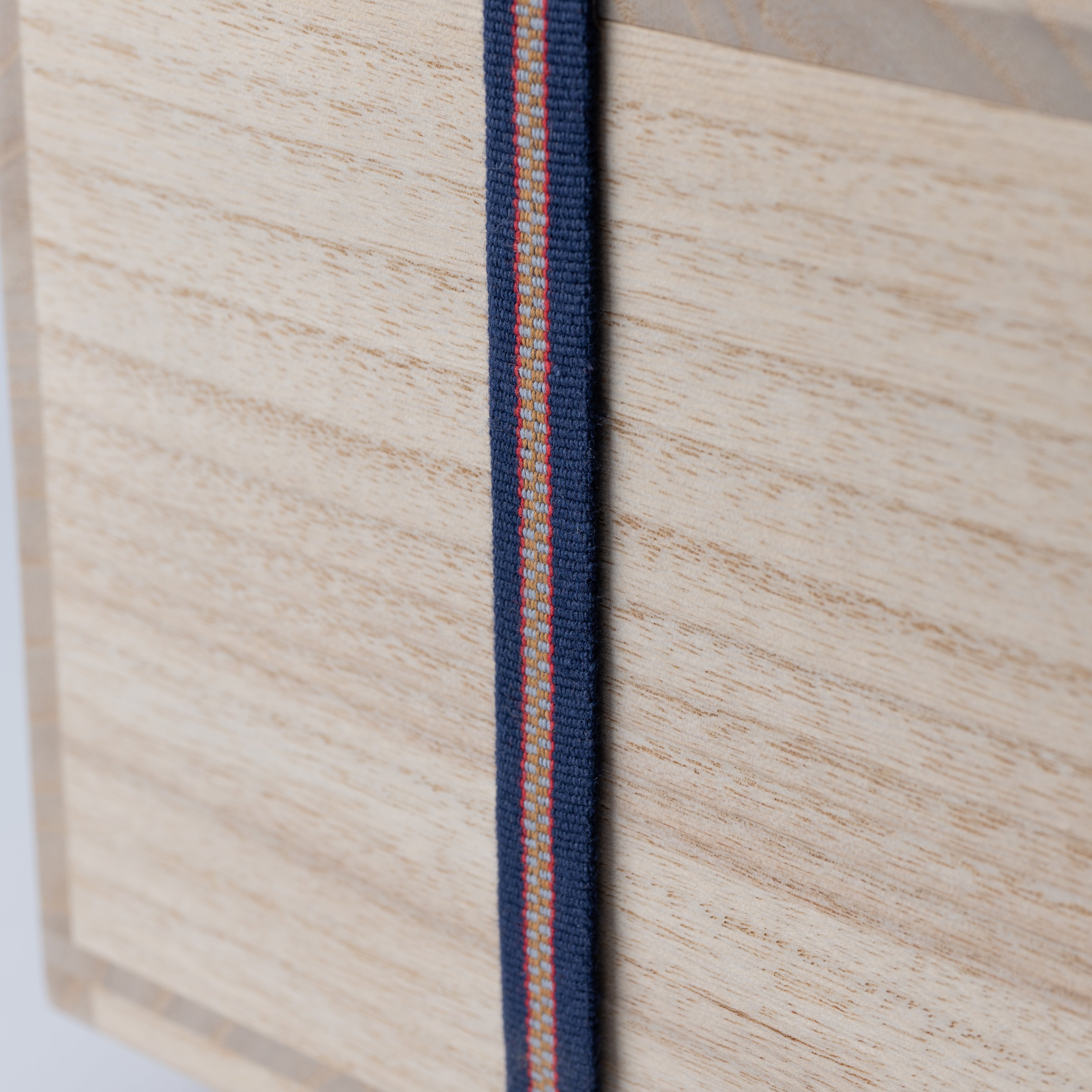
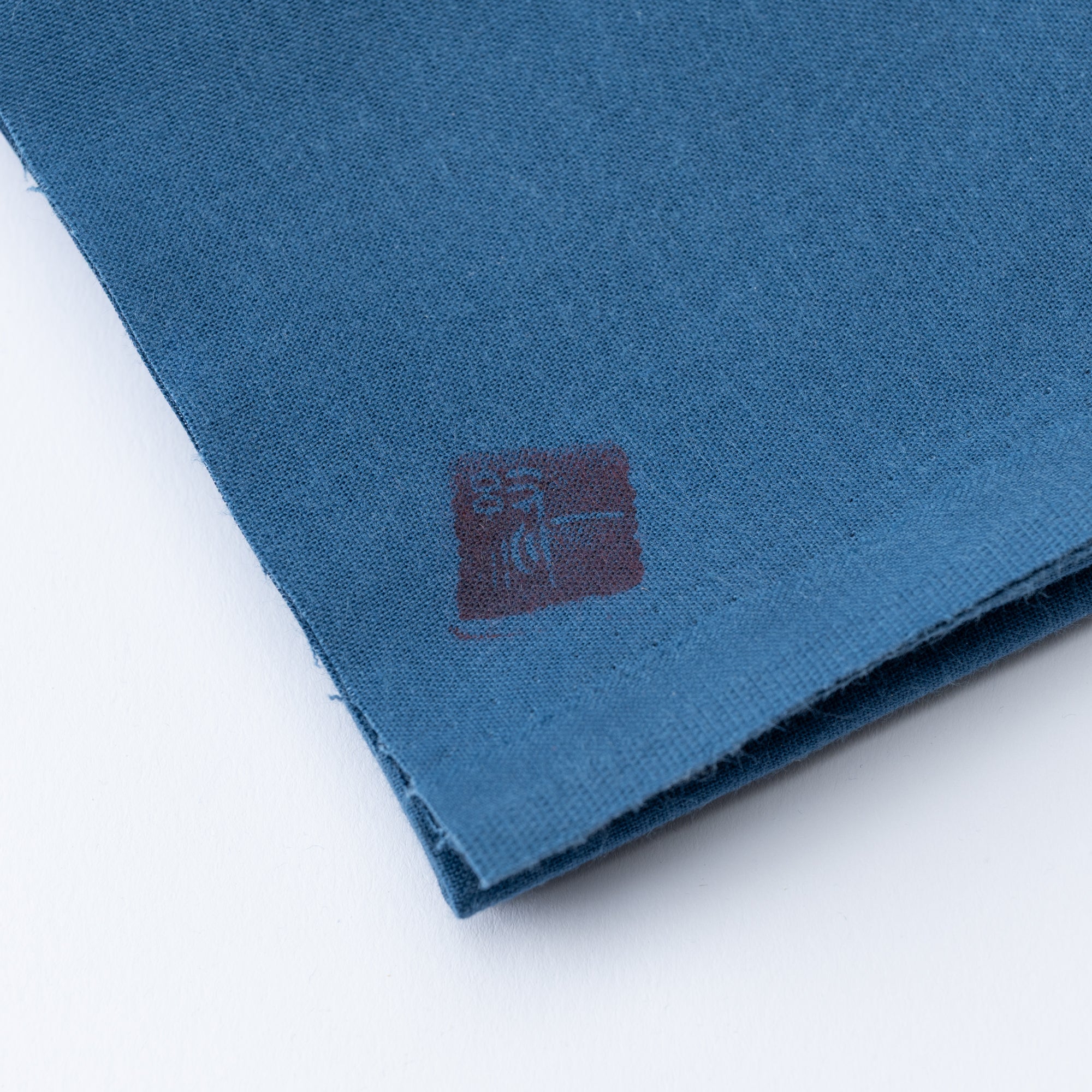
Oribe Earthen Wave Matcha Bowl
In this work, Iga ware artisan Fukushima Kazuhiro pushes the beauty of the Oribe glaze toward rougher, more elemental ground. Hand-pinched, the vessel asserts itself with a rugged presence, shaped not for symmetry but for impact. The ridges rise unevenly, breaking like waves, giving the form a sense of untamed vitality.
Crafted using shinogi, a technique in which the clay is worked into raised lines or planes, the sides catch shifting light. Here, the ridges are less measured, their irregular strength emphasizing the substance of the material. At the rim, the thickness is laid bare, while multiple glazes settle into folds and recesses, evoking a landscape shaped by natural forces. The Oribe finish reveals a glassy green, set in striking contrast against the textured body.
Placed beside the Oribe Soft Ridge Matcha Bowl, this piece offers a rare opportunity to trace an artist’s thought in transition. This bowl leans toward turbulence and strength, showing how a shared vocabulary of Oribe pieces can unfold into differing expressions. Together, they mark distinct points in Fukushima’s practice, evidence of an evolving pursuit rather than a fixed style.
The bowl embodies a striking duality: deliberate yet unrefined, forceful yet contemplative. In its heft and shifting glaze, one perceives both the origin of earth and the vision of the maker, fused through fire into a form that feels alive.
DETAILS
| Quantity | 1 |
| Size |
D 12.5 cm (4.9 in) x W 13.5 cm (5.3 in) x H 11.0 cm (4.3 in) [Wooden box] L 17.0 cm (6.7 in) x W 15.5 cm (6.1 in) x H 16.0 cm (6.3 in) |
| Weight | 580 g (20.5 oz) |
| Material | Stoneware |
| Package Type | Wooden box |
| Microwave | No |
| Dishwasher | No |
Maker / Brand
Born as the eighth-generation successor of the Mukai Kiln, which has thrived in Iga for over three centuries, Fukushima Kazuhiro creates ceramic works that combine the profound presence of earth with the translucent beauty of vidro glaze and the distinctive, crackled kairagi texture. While deeply rooted in tradition, his work embraces a contemporary sensibility, transforming the seemingly accidental patterns formed by fire, clay, and ash into deliberate expressions of artistry. Through this process, Fukushima opens new horizons for Iga ware, infusing each piece with striking individuality and life.
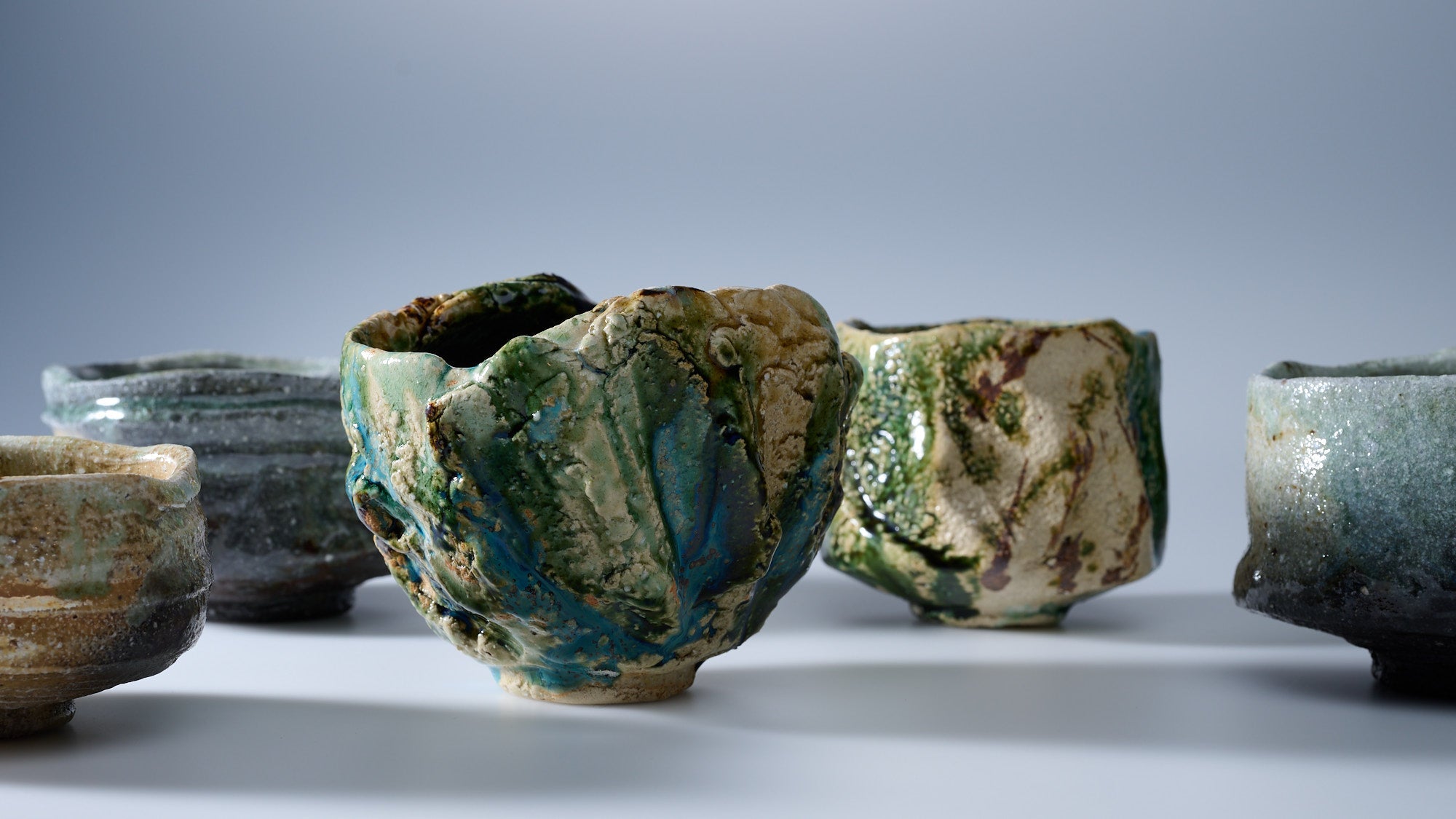
Crafts
Iga ware, produced in the Iga region of Mie Prefecture, is celebrated for its deep roots in Japanese ceramic history and its distinctive character. With a lineage stretching back some 1,200 years, Iga ware rose to prominence during the Momoyama period (1573–1615 CE), when it became closely tied to the aesthetics of the tea ceremony.
As a form of traditional Japanese pottery, Iga ware is admired for its robust clay, earthy texture, and the organic beauty that emerges through various firing methods. The natural ash glazing and translucent green, glass-like vidro effects created by the intense heat of the kiln reveal the expressive artistry that defines Iga ware.
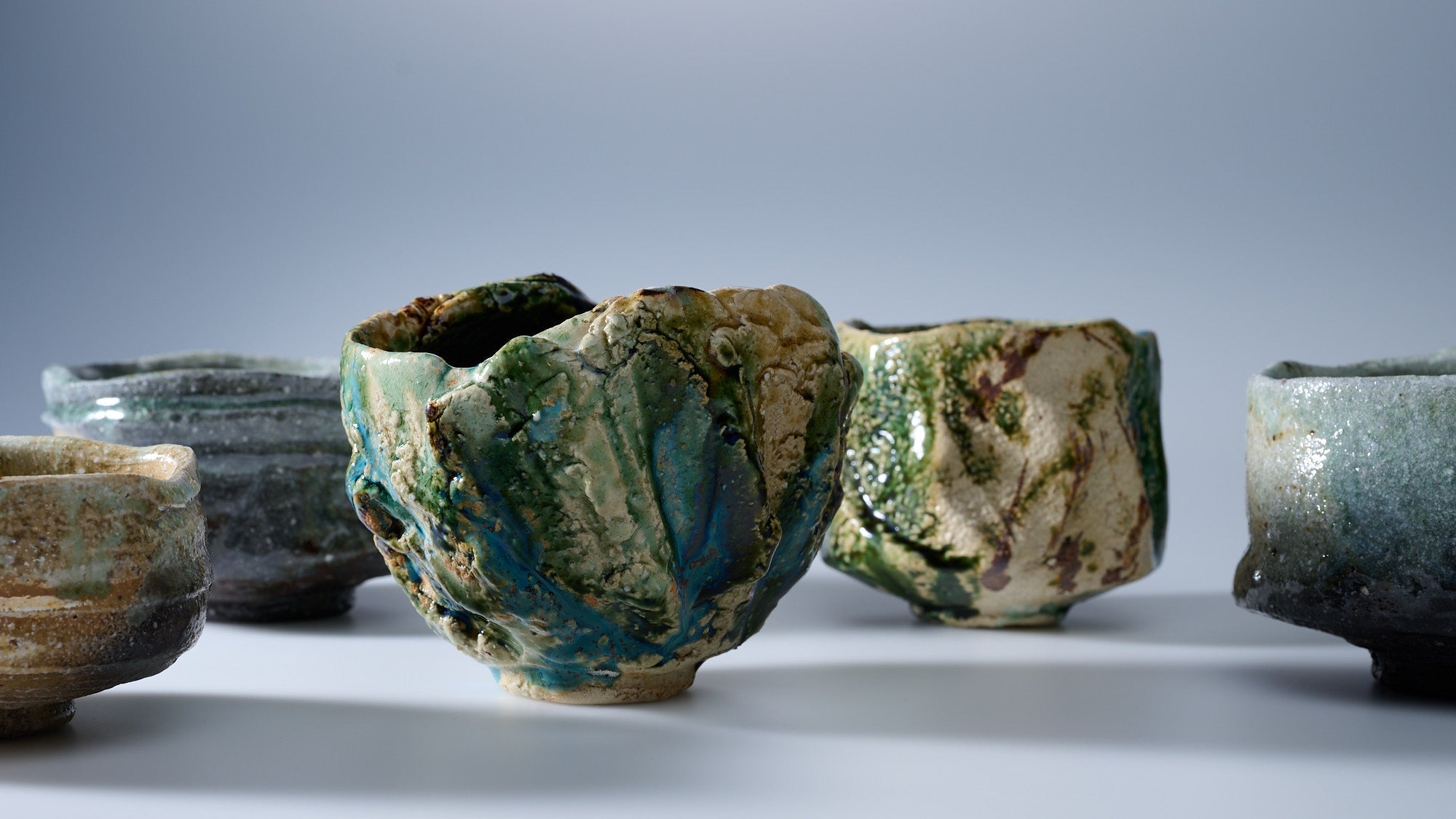
Notes
Choose options




















































About Artist
Musubi Gallery
Since its inception, MUSUBI KILN has strived to introduce the world to the finest traditional crafts from masters all around Japan.
Here, in the Gallery, we seek to showcase the highest echelon of traditional techniques passed down through generations. You can discover works from masters who have not only perfected those methods, but added their imagination to innovate the craft even further.
Some of these masters have even been named Living National Treasures, a title bestowed upon them by the Japanese government to formally recognize their contribution to crafts and culture — thereby cementing their legacy and making them an important part of art history.
Each piece is meticulously handcrafted over many months to create a timeless treasure that's unlike any other. And when it's in your home, you, too, will become part of that history.
Welcome to the Gallery. Please, peruse at your leisure.
